4th, Royal HeadOnEast Festival to Showcase Best of Slavonia and Baranja
September 11, 2022 - Although the east of Croatia lives and breathes hedonism all year round, there is a moment every year when it shines really, really brightly. For the fourth year in a row, during the two-day festival of hedonism, the Osijek-Baranja County Tourist Board will offer to the world the best of Slavonia and Baranja in one place. On September 30 and October 1, HeadOnEast is taking place in Osijek!
As proclaimed by the County Tourist Board, Hedonism is in the east!
The three-day entertainment event, aptly named "HeadOnEast" or simply - Hedonist, invites all pleasure-seekers to head east. You will enjoy, as befits true hedonists, the best that Slavonija and Baranja have to offer.

Dubravka Petric / Pixsell
During those days, the old Fortress in Osijek amazes with numerous themed passages and streets, unique content and imaginative activities, along with the smells of the region's best gastronomic delicacies. All this rests on the presentation of the rich offer of Slavonia and Baranja - from well-known events to a diverse cultural offer. Discover how to live hedonism to the fullest and be inspired by the flavours, colours and beauty of this region.
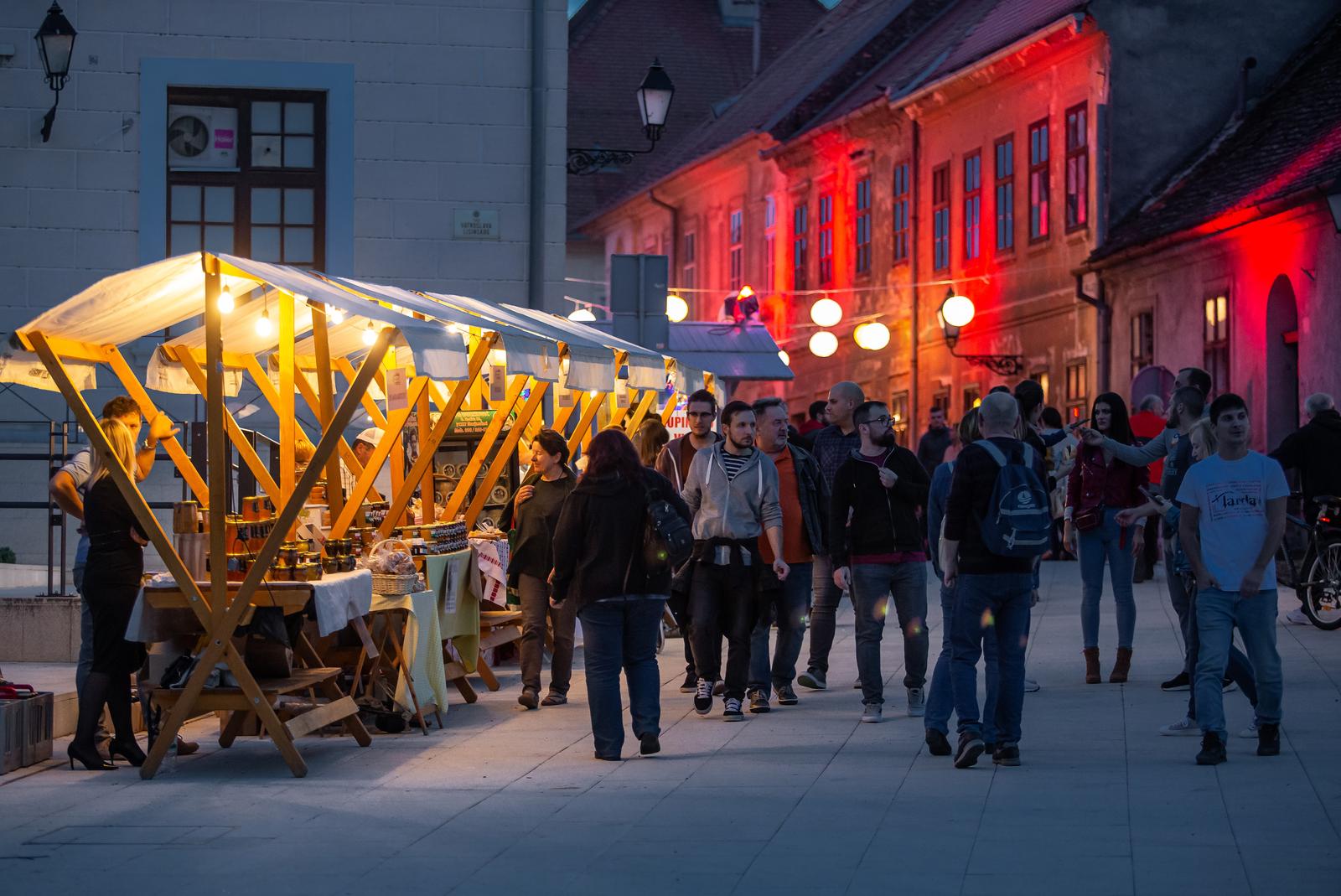
Davor Javorovic / Pixsell
All clear! Hedonists, there is no surrender - except surrender to pleasure.
This year, it carries the "royal" title because the main program will take place in the parks of King Petar Krešimir IV and King Tomislav. In addition to the art of light, the mandatory parts of this year's HeadOnEast traditionally include other types of art, wine, beer and all kinds of gastronomic delicacies. An excellent music line-up will be in charge of spicing it all up. This year's list of hedonists includes Fluentes, Gelato Sisters, Z++, Massimo, Daleka Obala.
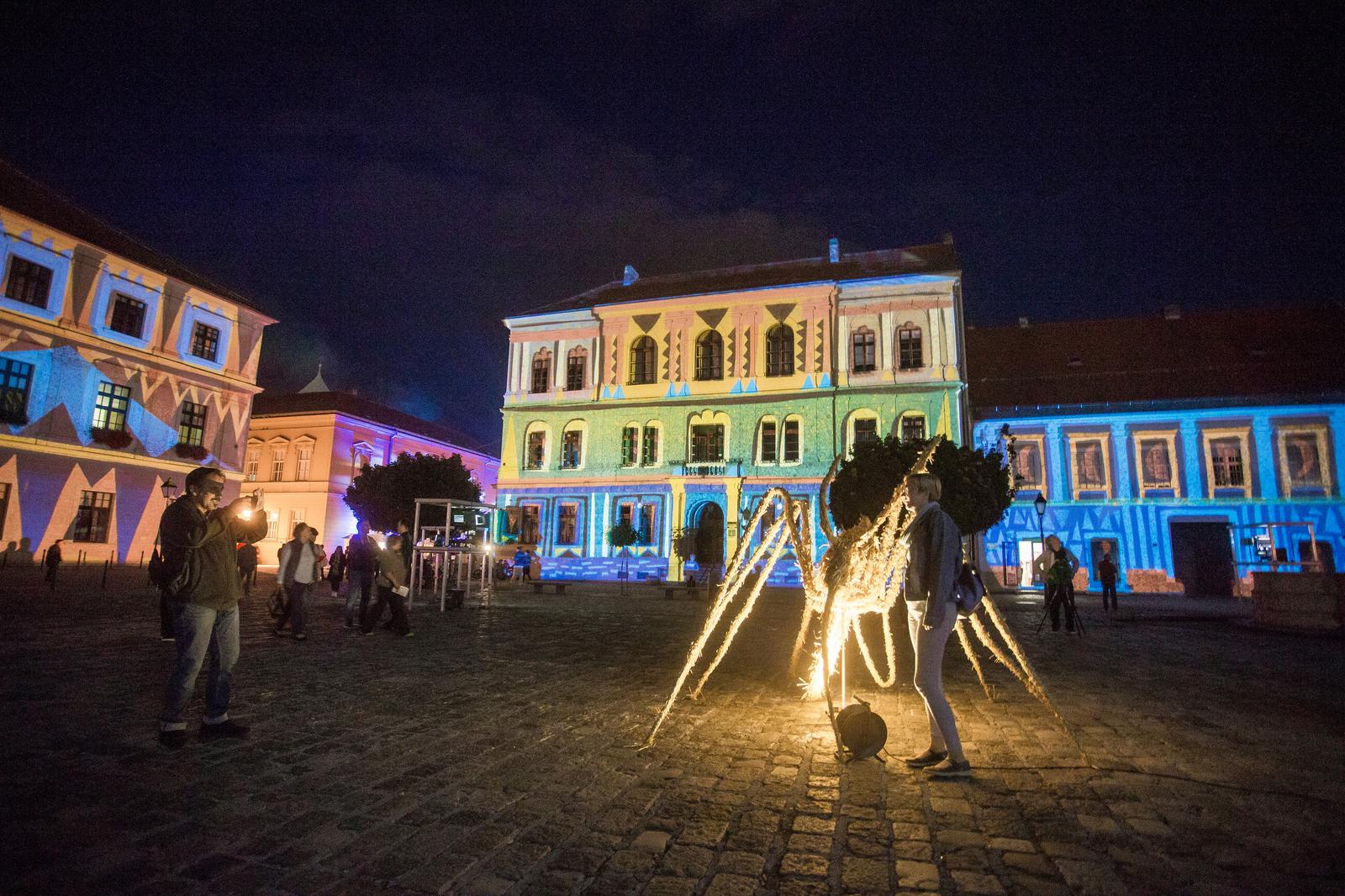
Davor Javorovic / Pixsell
Up to date information about the event and the program can be followed in detail at visitslavoniabaranja.com, Facebook page Visit Slavonija Baranja and Instagram profile visit.slavonija.baranja.
For more, make sure to check out our dedicated Lifestyle section.
Through Croatia with All Senses: From Sights to Bites
July 10, 2022 - As the Croatian peak season has started to roll out, tourists are arriving from all over the world, and most of them with a list of sights they must-see. Of course, Croatia is blessed with its gems and beauties every step of the way, but let me start this series by giving some insight into some delicate bites on the Adriatic. Activate your sense of taste and read through the culinary highlights that await you.
Cheese
Regardless of the occasion, a delicacy that will surely be a good choice is cheese. Especially in Croatia, which has several award-winning local kinds of cheese, one should definitely grab the opportunity and order a plate. Probably the most famous is Pag cheese or 'paški sir’ made from the milk of local sheep on the island of Pag. Another very popular option would be cottage cheese and ‘prgica’ both made of cow’s milk or the native Lika ‘škripavac', which combines sheep's and cow's milk. And let's not forget, 'sir iz mišine', an unusual type of goat's milk cheese that is traditionally produced in the areas of Dalmatian Hinterland and Velebit. It will surprise you with its sheepskin packaging and distinct flavour.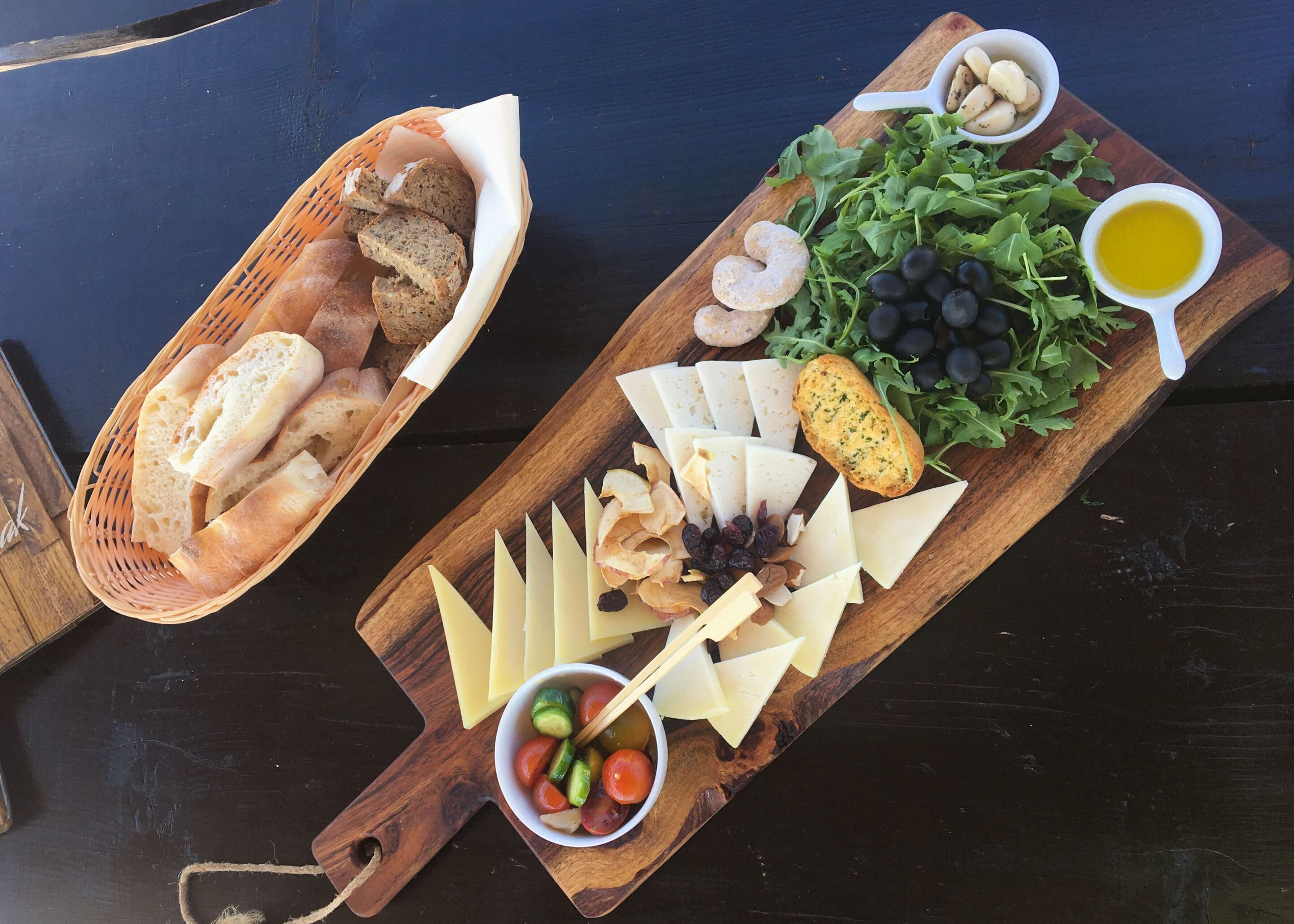
Tuna
While staying on the Croatian coast, you'll probably find grilled fish on your table at least once, usually served with potatoes and chard. However, what should be pointed out is that several experts consider the Adriatic Sea to be the optimal home to one specific type of fish –tuna. Some even declared the Adriatic tuna steak one of the best in the world. Moreover, you can actually find many other dishes using tuna. So, look out for it at a local restaurant and order one of the delicious tuna specialties.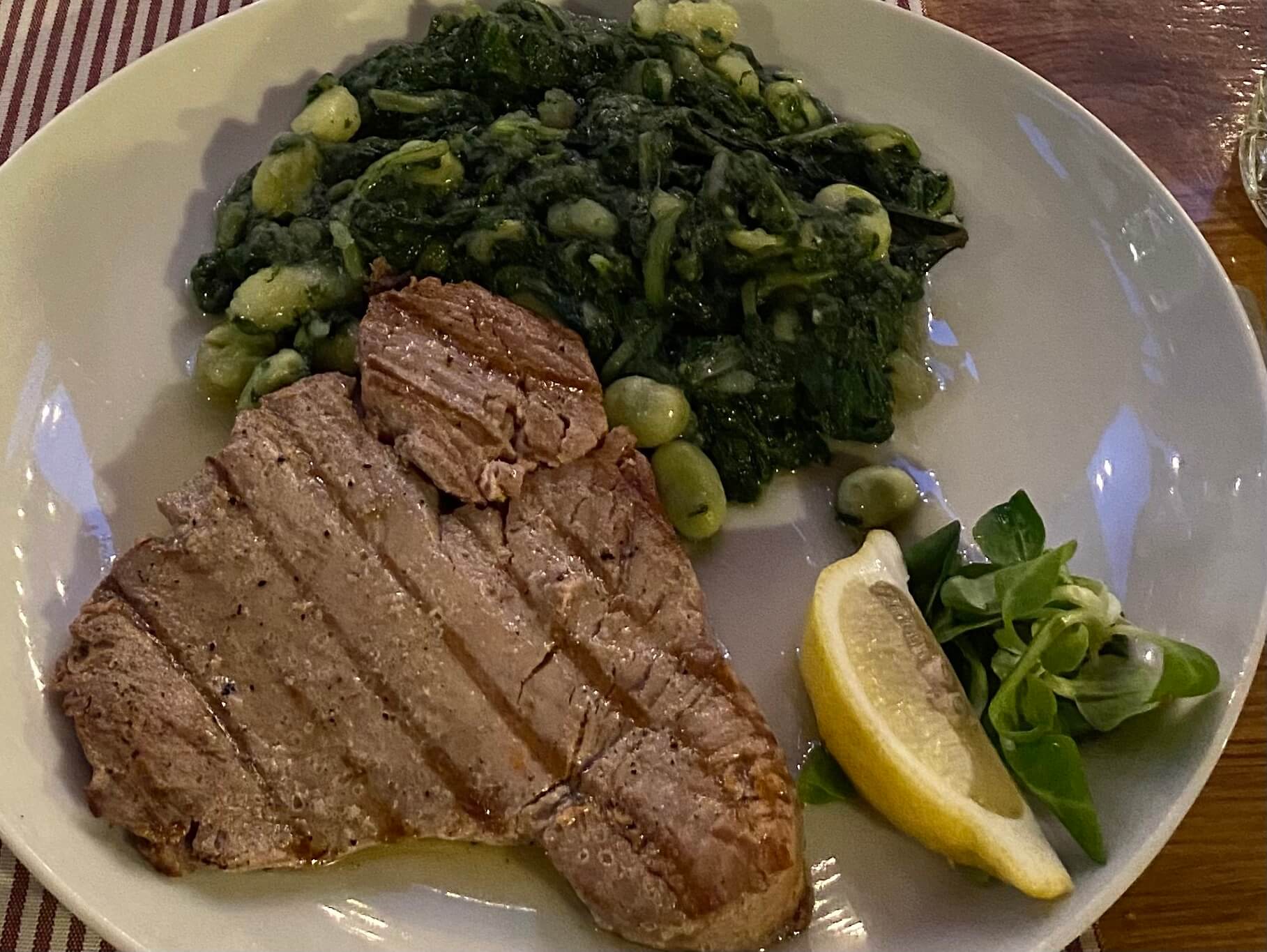
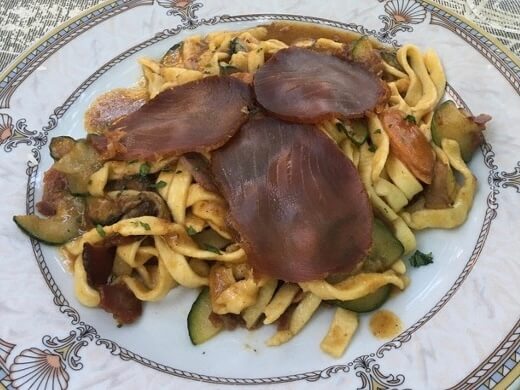
Squid
Besides fish, one should not visit the Adriatic coast and not try squid. Fried or grilled, both versions are a great catch and available on almost any menu. They are mostly served, again like fish, with potatoes and chard on the side. Just squeeze some lemon on the top and enjoy this typical taste of the Adriatic coast.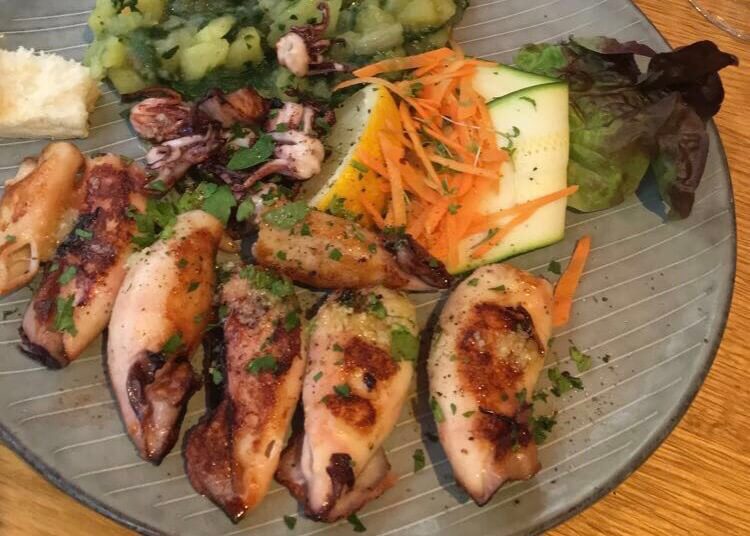
Seafood, in general
One automatically associates the sun, the sea, and the Adriatic coast as the best parts of summer in Croatia. But seafood should also join this list if one really wants to enjoy their vacation tastefully as well. From prawns to clams, oysters, and mussels, they are all available fresh in many local restaurants daily. These specialties can be served in various ways, but most often as a seafood risotto or sometimes even with homemade pasta.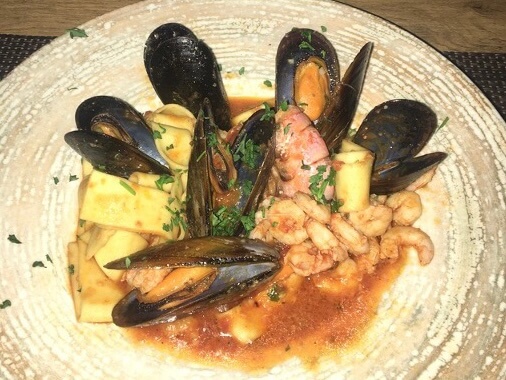
Black risotto
As the pot of gold at the end of this 1st part of the series, the famous black risotto must be mentioned. Yes, its color is black not gold, and yes, it may not look as tasty as all the other delicacies, but one thing is for sure - those who have fallen in love with this specialty certainly think of it as golden. This risotto made of squid, squid ink, and local herbs will delight with its specific intense flavor. But a little tip on the side, watch your smile when trying this culinary experience because the black ink will probably make your lips and teeth a bit more colorful for a moment.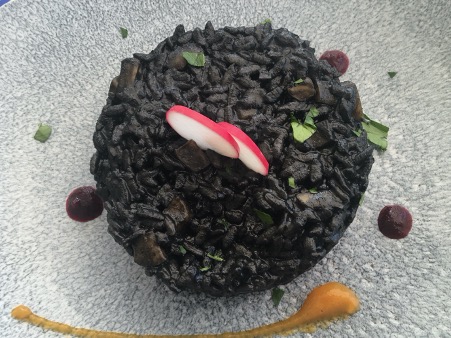
Are you hungry yet? Take a walk through the streets of your chosen destination on the Adriatic coast and start looking for ideal places where you can finally order one of the mentioned specialties. After all, "love goes through the stomach" is not said in vain. In fact, well-prepared local dishes will surely strengthen your love for Croatia, so bon appetite - or how we say, “dobar tek”.
To read more about sports in Croatia, follow TCN’s dedicated page.
Pizza Festival Opens In Zagreb For First Time
ZAGREB, 23 June 2022- The Pizza Festival, held in Zagreb for the first time, opened in Dr Franjo Tuđman Square on Thursday, and it runs through 3 July.
"Delicious pizzas, excellent music and chilled drinks have the main role in this new gastronomic adventure," said the organisers from the Chicken or Egg agency.
Visitors will be able to try 19 different pizza flavours from four Croatian hospitality establishments. The working hours of the festival are from 12 p.m. to 2 a.m., and admission is free.
For more, check out our lifestyle section.
Slavonian Truffle to Round off the Region's Gastro Offer
April 23, 2022 - Slavonia is a region in the far east of Croatia, known for its golden plains, kulen, rakija, and truffles... wait. Well, maybe not just yet, but yes, truffles could become another reason to visit and discover this area. Though Istria is considered to be the Croatian queen of truffles, Slavonian forests are, apparently, just as rich with the fancy fungi.
As Glas Slavonije writes, Željko Labaš follows the situation in the forests of the Bizovac region and its surroundings with great love and attention.
Truffles were sought in this area as early as 1777.
"Due to its geographical position, it is understandable that seekers in Istria were the first to find out about the value of truffles, and I would say that they also had good marketing, so they raised their white truffles to the world level and are able to price them from one hundred to several thousand euros per kilogram, depending on quality. However, although the first written trace of truffle hunting in Istria dates back to 1924, Slavonia has a great advantage, because the Austro-Hungarian imperial governor Otto von Tauben mentioned the search for truffles in this area in 1777", Labaš reveals.
According to him, when our ancestors took their pigs to graze in Slavonian forests, they noticed that the pigs with their extraordinary sense of smell, in addition to acorns, would find some "tubers" and eat them with great pleasure. And while there was no particular reaction to this in the area, the Istrians decided to get dogs from Italy to look for truffles and start a big business.
A few years ago, however, there was a change in the research and search for truffles. Istrians kept their brand of white truffles, but enthusiasts in the Pannonian area from the Sutla to the Danube came to their senses and confirmed that Pannonian forests are richer in truffles than Istria, particularly black truffles. Željko Labaš says that Varaždin County has gone the furthest, and at the request of the Novi Marof Tourist Board financed four months of research during which it was determined that there are as many as four species of black truffles in Kalnik and the surrounding forests. During the Boletus Days festival in Paka, there was a demonstration exercise for finding truffles, and these fungi were included in the gastronomic offer especially appreciated by Germans, visitors to local holiday homes. The search began in Petrinja, through the Lonjsko Polje Nature Park, where the Russula mushroom association successfully finds truffles.
Poor man's truffle
"Veterans of the homeland war joined in the truffle search as, they say, there is no better therapy for PTSD - outdoors, active, with your best friend, a dog, enjoying an unsurpassed sense of freedom. I must also mention Matija Josipović, the author of several manuals and a great connoisseur from the area of Kutina - Novska. The truffle connoisseurs closest to us are Hrvoje Knežević from Našice, who works with the Mushroom Association on a beautiful and well-attended exhibition of Slavonian forest mushrooms, and Darko Adamović from Koška, with whom I have worked for years and he has always got beautiful mushrooms, chanterelles and black trumpets. I state this information because, in Europe, these black trumpets are known as the "poor man's truffle", since they have the same effect as the famous Istrian white truffle, which is considered an aphrodisiac", says Labaš.
Unlike Boletus mushrooms, truffles can also be artificially grown on the roots of hazelnuts or hornbeams, which requires a lot of knowledge and patience.
"It took us a whole century to understand the wealth of Slavonia from the Austro-Hungarian Monarchy. All this, thanks to persistent enthusiasts - from top wines, to old cattle species, today we can round off the beauty of Pannonia with the addition of truffles to its gastronomic, tourist, and recreational offer", comments Labaš.
When it comes to ways of finding this prized and expensive delicacy, Labaš prefers specially trained dogs.
"Every hunting dog can be trained to look for truffles, but the Lagotto Romagnolo breed is the most skilled. These dogs have a long history in hunting from the 15th century as the so-called water dogs who used to pull the hunted game out of the water. At one point, someone realised that because of their exceptional sense of smell they could also be used to search for truffles. The price of a Lagotto Romagnolo is acceptable these days, starting from 500 euros. These small, shaggy big-eyed puppies are incredibly lively and adore their owner and families. Their training is a little different from training dogs to search for mines and narcotics. It consists of several phases, and from the beginning, the owner must be with the dog at all times. An introduction follows to the forest, the smell of truffles, and how to act when you find it. Training is the most expensive part, so the price of a well-trained truffle-seeking dog reaches that of a good car" says Labaš, adding that pigs can also be trained to search for truffles because they have a better sense of smell, the disadvantage being that they don't really like sharing the yummy mushroom, and it could be complicated to transport them through forests.
For more, make sure to check out our lifestyle section.
Gastronomy Contest for Disabled to Be Held in a Few Croatian Cities
ZAGREB, 23 Aug 2021 - The first national gastronomy contests for disabled people above 17 will be organized in several Croatian cities in September and October, and the competition called "Amor Spoon" is organized by an association of teachers in schools for catering occupations and Conventual Franciscans in the country.
Participants will take part in the contest in seven cities: Sisak on 9 September, Vinkovci on 12 September, Novi Marof on 16 September, Pula on 19 September, Šibenik on 23 September, Split on 26 September, and in Zagreb from 1 to 3 October.
They can choose one of a few events in which they can compete: cooking, food serving, and preparing cocktails and drinks.
The most successful participants will be offered to attend free-of-charge workshops within the CookLook project of inclusivity and trips to Rome.
The contest has been so far supported by many associations, NGOs, and centers for rehabilitation said the association of teachers in schools for catering occupations (UNUO) on Monday.
For more on lifestyle in Croatia, follow TCN's dedicated page.
Chef Vjeko Bašić Masterclass: Seasonal Ingredients featuring Wild Leeks and Culinary Tourism in Croatia
JUNE 19, 2021 - Vice-president of JRE Croatia and restaurateur Vjeko Bašić held a masterclass in Split, using wild leeks which grow abundantly in his hometown, Murter Island, to promote the diverse flora of Croatia and its importance in the country's gastronomic industry.
JRE Croatia is a part of the Jeunes Restaurateurs which is an international association of young outstanding restaurateurs and chefs across 15 countries all over the world. JRE chefs share remarkable culinary talent, a strong passion for gastronomy and sustainability, and the commitment to keep the authenticity of their own local produce, dishes, and tradition alive. The sophisticated and relaxing ambience of JRE restaurants and the delectable selection of gourmet food and top local and international wines never fail to provide their guests a memorable dining experience!
To promote the culture and diverse flora of Croatia, Chef Vjeko Bašić together with JRE Croatia conducted a masterclass in Split, Croatia featuring seasonal, rare, and native plants in Croatia. The masterclass was done in a fully-equipped and high-technology kitchen of Miele Experience Centar Split, with the intent to highlight "paski/pilci" or young garlic sprouts that grow abundantly and is used mainly in the islands of Pag and Kvarner. However, since Chef Vjeko Bašić hails from island Murter, he opted for an ingredient much closer to home - wild leeks. His class was attended by 4 outstanding young culinary students from Aspira and one intern journalist from Total Croatia News.
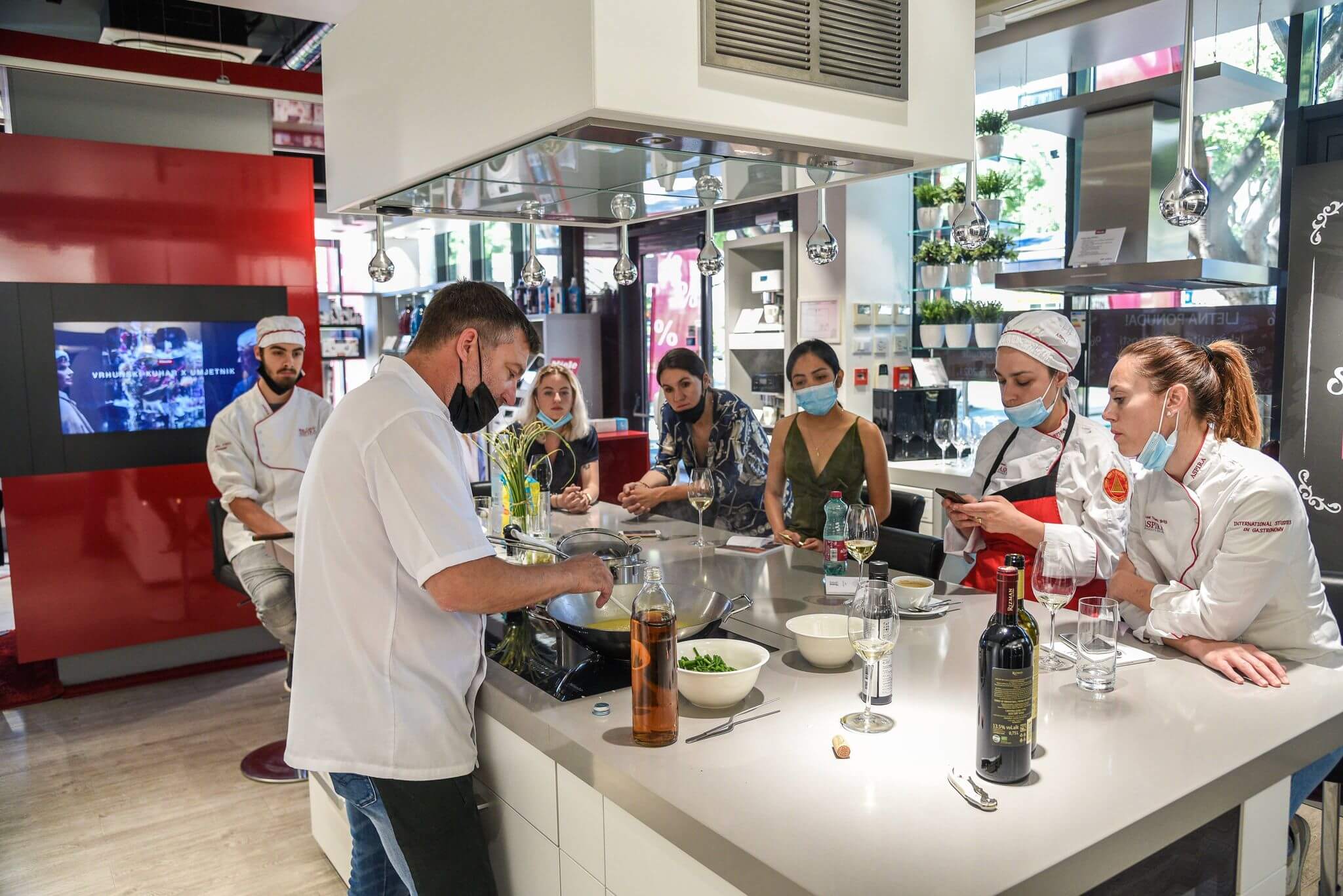
Masterclass in Miele Experience Centar Split by Chef Vjeko Bašić | Photo credit: JRE Croatia
Chef Vjeko Bašić is the owner of Konoba Boba, a fish restaurant located on the beautiful Murter Island in the Dalmatian region of Croatia. Konoba Boba is one of the 12 members and 4 honorary members of Croatian restaurateurs who have received membership in JRE Croatia. The name of the restaurant, Boba, is a family nickname that gives homage to the family's rich stories and origin. The restaurant is deeply connected to the island and therefore, highlights the usage of fresh local produce from the sea and the land of Murter itself. To respect the natural rhythm of nature and its suppliers, Konoba Boba uses seasonal ingredients and creatively incorporates locally and freshly harvested produce from their region into their menu.
The chef chose to prepare wild leek risotto for the masterclass. "On my island, my father used to pick and cook wild leeks that grow outside our house.", he fondly recalled his childhood in Murter. Prior to the class, Vjeko prepared chicken stock made with chicken, celery, leeks, onions, and carrots to be used for this special risotto. "For a good risotto, you need to have a good onion and olive oil.", he emphasized. He made a unique pesto sauce for the risotto using "paski" (young garlic sprouts), pine nuts, and olive oil and he also offered his own pickled paski for the participants to taste.
According to Vjeko, paski, wild leeks and wild asparagus grow in the same season which is from spring to early summer. It can also be prepared in a similar style as wild asparagus salad which is to blanch the vegetables, mix with some salt, pepper, and boiled eggs and add a splash of olive oil and balsamic vinegar. In cooking wild leeks and paski, only the upper part is used and the lower part is discarded for its hard texture.
As Chef Vjeko prepares his dish, Irina of JRE Croatia, offered the participants two refined selections of wine - Pošip and Plavac Mali - both from Rizman winery. "A good wine is an important part of the food experience.", Irina says as she pours each of the participants a glass of aperitif.
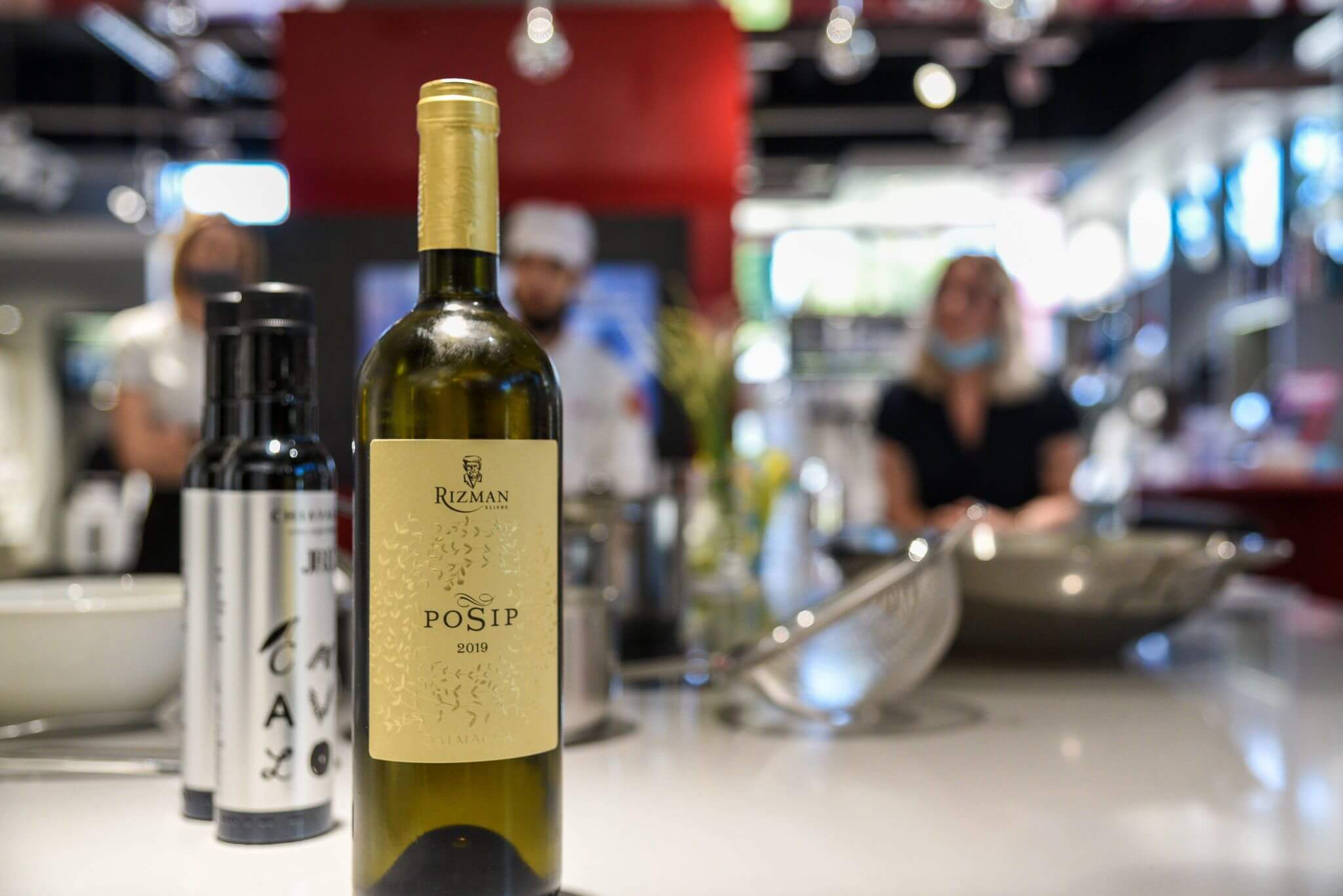
Photo credit: JRE Croatia
Rizman Winery, owned by the Stimač family, is situated in the youngest wine-growing area in Croatia which is called Komarna, in the Dubrovnik-Neretva County. The vineyards are located on a hilly area 250 meters above sea level and are close to the proximity of the sea and the famous valley of the Neretva river which provides good microclimatic conditions for wine cultivation. The wine-growing area features different soil compositions mostly of limestone and a tiny amount of organic matter, with 30% slope inclination and 2,600 hours of sunlight per year. Over 90% of vines in Rizman Winery belong to the indigenous varieties of Plavac Mali and Pošip and the rare grape variety of Tribidrag. The winery is a long-standing family tradition and the name Rizman is given to honour its founder - the grandfather and great grandfather of the Stimač family.
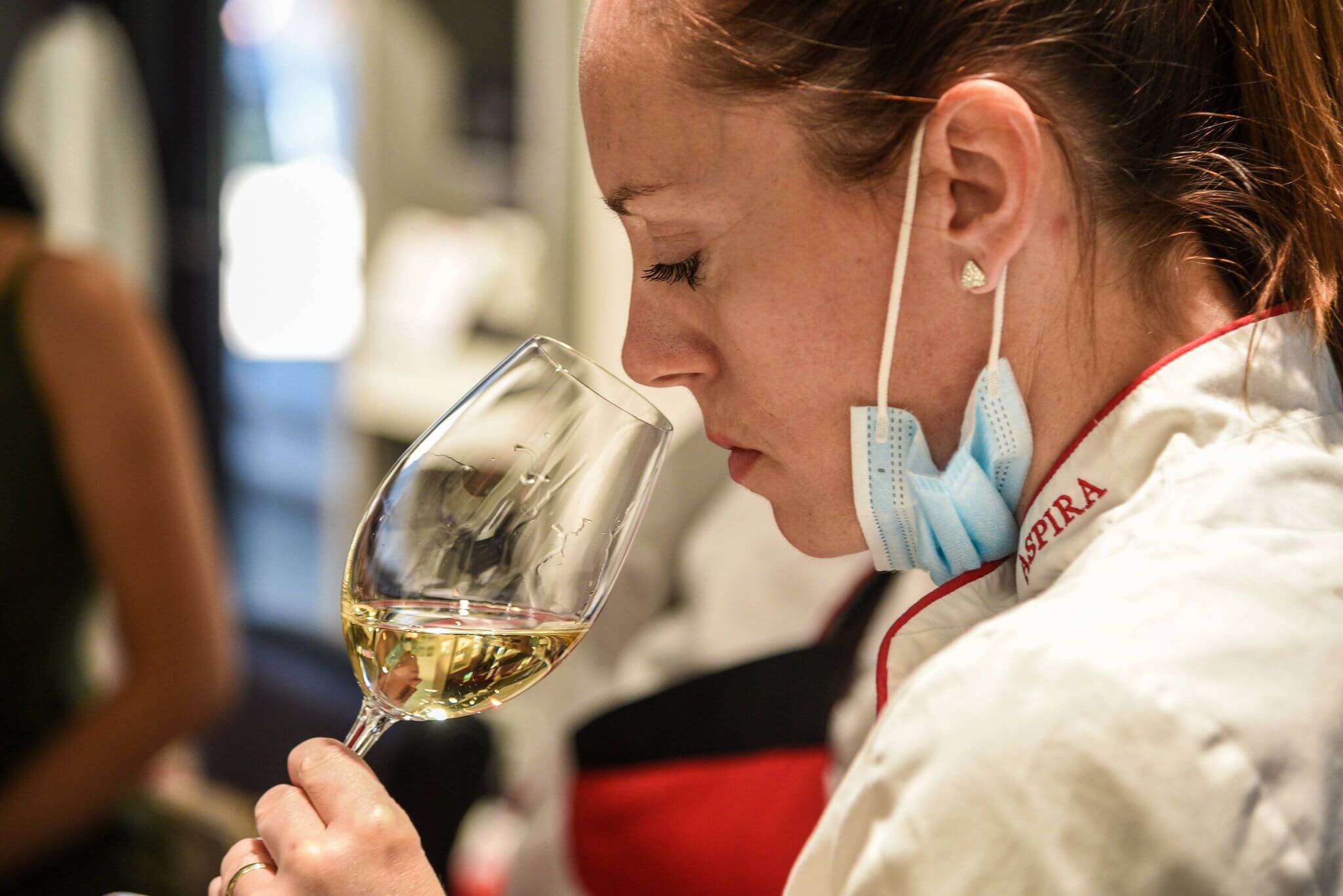
A culinary student of Aspira College savour the crisp and sweet aroma of RIzman's Pošip served in a special Malvasia Istriana Glass | Photo credit: JRE Croatia
The drinks were served in Malvasia Istriana glasses which were created by Riedel, a major manufacturer of wine accessories, dedicated specifically for Croatia's Malvasia Istriana (malvazia istarska). Malvasia is a type of wine grape with many varieties which includes Malvasia Istriana. It was a project initiated by Winemakers and Winegrowers of Istria - Vinistra Association to promote Istrian wineries and Croatian wine to the world. Nowadays, Malvasia Istriana glasses are called Superleggero Loire, because apart from pairing perfectly with Istrian Malvasia, it also pairs well with Sauvignon Blanc.
Chiavalon JRE olive oil was also used in the risotto. "Olive oil is very important to Mediterranean gastronomy", said Irina. Because of its importance, JRE wanted to have good olive oil to use in their restaurants so they partnered with Chiavalon to produce a perfectly balanced olive oil for culinary use because a strong olive oil can overpower a dish and a neutral-tasting olive oil will not give authentic Meditteranean touch to the dish. Therefore, after harvest every year, JRE Croatia and its restaurateurs get together to conduct a blind taste-test sampling to choose the oil to be used by JRE. It is a Chiavalon and JRE co-branded product of olive oil which is only found in JRE restaurants. Irina shared a tip to everyone: "For olive oil lovers, Rizman olive oil is also of top quality."
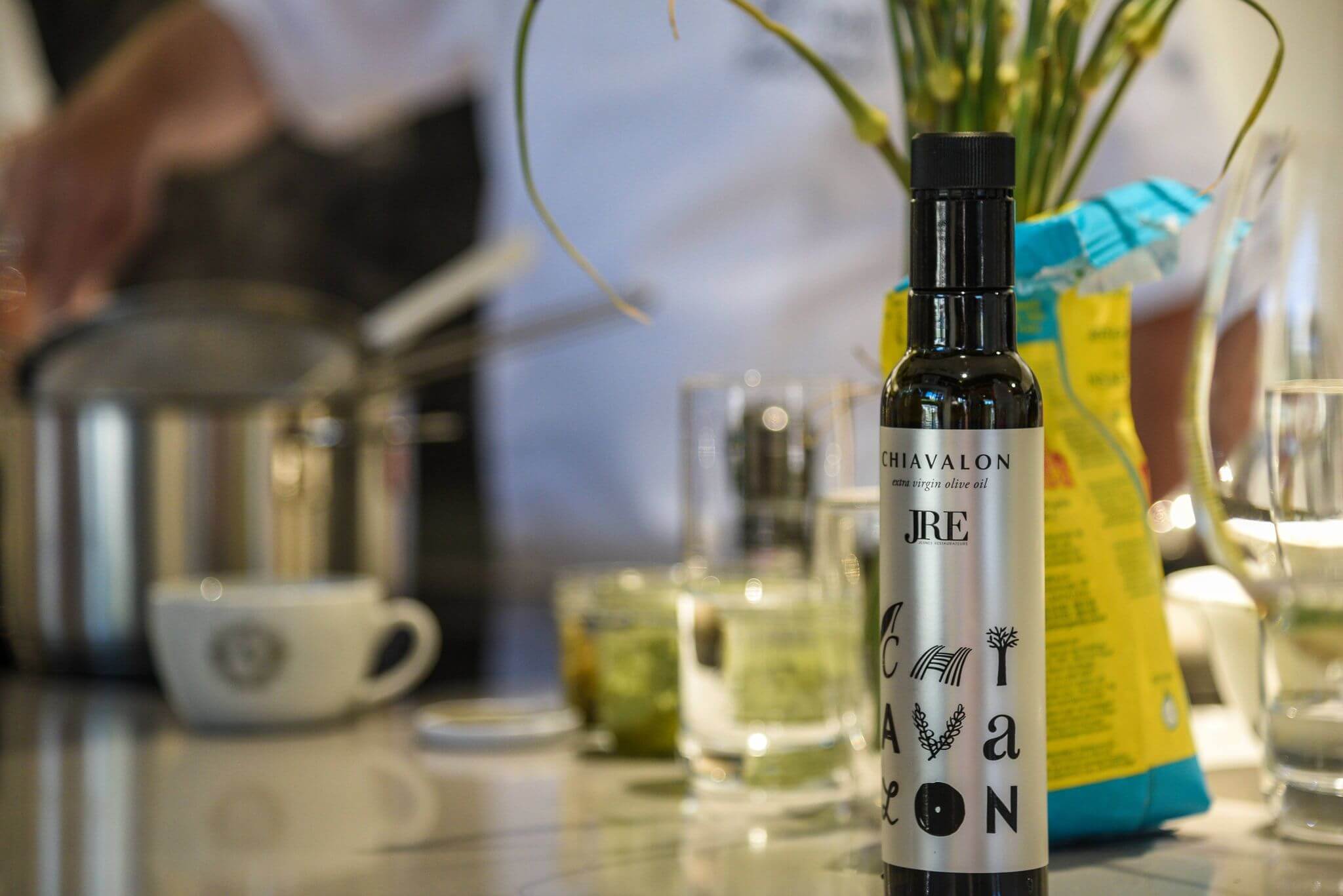
Chiavalon JRE olive oil | Photo credit: JRE Croatia
As always, every chef has a different method of cooking to bring out the best from their ingredients. "So when I cook risotto, I saute the onion in a pan, toast the rice in another skillet, and then I mix the onion with the rice after that", says Vjeko. "Why do you that?", asked one of the participants. "Because if I put the rice in the same skillet, the onion will burn.", the chef answered and then humourously added, "But you need to use a lot of pans - and now is the worst time because I don't have a sous chef with me." In this dish, carnaroli rice was used because it is ideal for risotto. He also added the pesto sauce he made from paski or young garlic sprouts in the dish. "It is also important at the end risotto to add a bit of fat - it can be butter or it can be olive oil. This time, I combined both butter and olive oil", he noted. To add acidity to the risotto, Chef Vjeko prefers to use a little bit of vinegar than the usual lemon.
After the risotto was ready, Chef Vjeko plated it beautifully and topped it off with crispy pancetta, some ricotta cheese, and homemade pickled paski. The crunchiness of the wild leek and the pancetta added a beautiful texture to the dish and the light tangy flavour from the pickled paski gave the dish a perfect balance of acidity.

Chef Vjeko's wild leek risotto | Photo credit: JRE Croatia
Hardships in gastronomic tourism in Croatia
As the participants enjoy the food, they shared about the current problems people in gastronomy face especially those living in the Dalmatian region. "There is a big problem in Croatia with the supply chain. There are small producers with good products but due to various economic problems, have difficulty supplying sufficiently, regularly, and efficiently because they can only sell as much as they can produce. This makes the life of the chefs, restaurateurs, and people in this industry difficult in Croatia," according to Irina. Apart from the problem in the availability and regularity of supply of good quality ingredients, there is also a problem with manpower in this industry. "Although Croatia has excellent chefs and cooks, we are still new in the gastronomic scene and culinary schooling system compared to other European countries who have been a long-time destination for gourmands over the years. Because of this, JRE Croatia sincerely puts all their hopes to the young chefs of this country to help this industry succeed," she added. The seasonal character of gastronomy in the Dalmatian region and the geographical location of Croatia is also one of the reasons why the prices of food are slightly higher than others. Since Dalmatia is harder to reach especially its islands, to get a regular supply of ingredients itself is costly. "This is the aim of JRE - to have our professional chefs and restaurateurs conduct events such as this to get publicity and make the consumers understand why chefs cannot prepare risotto in 5 minutes, and why the prices of the dishes are the way they are. They have to know how hard and costly it is to get a quality and regular supply of ingredients in Croatia", Irina said.
One of the participants said that there is one restaurant in Zagreb that serves different menus every day using ingredients that are currently available. Chef Vjeko retorted, "You can do that in Zagreb because they have a full busy season throughout the year so the supplies are always coming unlike in Dalmatia, where the season lasts for only 3 to 4 months." He then added, "You will see that when you start working in restaurants here, you, too, will experience the difficulty in getting food supply which usually starts to happen from the end of May onwards". They also agreed that climate change greatly affects the production time, amount, and quality of produce. "In JRE, we also embrace sustainability. It requires knowledge to understand and respect nature and to know that we cannot have everything at great amounts whenever we wish. It is important to appreciate what we have when we have it", Irina voiced out.
The Island of Murter, Konoba Boba, and Chef Vjeko Bašić
Also called the gate to the Kornati, Murter is an island national park and one of the pearls of the Adriatic Sea. It is a popular destination for people who love sailing and explore remote islands. Paklenica National Park is also nearby where one can enjoy sightseeing, hiking, and walking. Konoba Boba makes use of the richness of the Adriatic sea and serves an interesting selection of fresh seafood including roe, sea urchins, oysters, mortar, and salicornia. While maintaining their culture, Konoba Boba never fails to innovate and continuously elevates their dishes with new exciting elements! In addition to that, the restaurant offers 50 cozy interior dining seats and another 80 outdoor ones with a garden view filled with aromas of Mediterranean plants and trees including marjoram, basil, rosemary, immortelle, mint, fig, lemon, mulberry, olive and etc. which they incorporate in their dishes as well. Konoba Boba also has a wide array of wine selection carefully handpicked by the restaurant's sommelier, Mateo Juričev Talijaš
Apart from the restaurant Vjeko is successfully running, he also has been pursuing his passion for olive oil production. "We have our olive garden with 2,000-year-old olive trees. In autumn and wintertime, we take care of the trees, harvest the olive, and produce our olive oil. This year, our olive oil received a silver medal and our family was very happy about it.", he proudly said to the participants. In his spare time, he also loves to fish. "When I was a kid, I used to fish a lot with my father. But now that I started this business, I do not have much time for it. I would love to do it once more once I decide to retire from this industry.", he added.
According to his wife, Chef Vjeko, who also serves as the Vice-President of JRE Croatia, is living his dream. With an award from the Gault&Millau Croatia 2018 Chef of the Year, a successful business on an island he deeply cherishes, and endless support from his loving families, peers, and community - we can all agree that he truly is living the dream.
For more information on Jeunes Restaurateurs' affiliated restaurants and hotels, CLICK HERE.
For more on lifestyle in Croatia, follow TCN's dedicated page.
For more about Croatia, CLICK HERE.
Products of Slavonian and Baranja Gastronomic Offer Available Online
December 22, 2020 – Thanks to the internet platforms Eko tržnica and Eceker, domestic products from the rich domestic Slavonian and Baranja gastronomic offer can be ordered to your doorstep even during the coronavirus epidemic.
As Lokalni.hr reports, even during the coronavirus pandemic, products from the rich domestic Slavonian and Baranja gastronomic offer can be ordered online to your doorstep. This is possible thanks to the two internet platforms – Eko tržnica and Eceker, both of which deliver in the area of Osijek-Baranja County and the City of Zagreb. Eko tržnica is a successful project that has been implemented at the Osijek market since 2013, and in the last few years in an online edition. Their phylosophy is that food production must not pollute nature but must return us to nature.
On Eko tržnica and Eceker websites, family farms with ecological certification for food production offer their products. Customers in Croatia are increasingly aware and are looking for products of guaranteed origin, and the goal of the Solidarity Ecological Group, which coordinates buying and selling, is an ethical business, aiming to leave profits in the hands of producers and offer customers products at producer prices.
"By buying local agricultural products, especially at a time when their sales are difficult due to epidemiological measures, we help our family farms, and we provide ourselves and our families with home-grown fruits and vegetables from Slavonian and Baranja fields," said Osijek-Baranja County Prefect Ivan Anušić.
Local food producers have also united through the Eceker platform, where they offer traditional products from Slavonia and Baranja. As in the case of the Eko tržnica, this is a project supported by the Osijek-Baranja County, and both platforms are open for cooperation with local producers in order to further enrich the offer to end customers. Customers can see and order domestic products on the website, and delivery is on the doorstep.
To read more about lifestyle in Croatia, follow TCN's dedicated page.
Croatia Ranks 4th in Undiscovered Gastronomic Destinations in World
November 17, 2020 – Croatia receives another gastro recognition as the gastro portal Chef's Pencil has declared it as one of the best undiscovered gastronomic destinations in the world.
As Večernji list reports, it is a competition named "The Most Underrated Foodie Destination in the World" conducted among 250 renowned chefs and culinary experts, who singled out under-exposed gastro destinations that can stand alongside popular gastro destinations such as France and Italy.
They selected the top 10 countries that can boast of their gastronomic offer and wealth but are not widely-known as gastro destinations. Croatia took a high fourth place on this list, behind the Philippines, Vietnam, and Mexico. It is followed by Thailand, Peru, Australia, Jamaica, Portugal, and Norway.

Screenshot Chef's Pencil
"Croatia has become a really popular place to holiday over the last few years. And who can blame all those holidaymakers for reaching for pristine Adriatic waters, spectacular beaches, sublime Mediterranean climate, atmospheric Roman ruins, incredible national parks, and soaring mountains… Have I mentioned the food yet? And maybe that’s why it’s an underrated foodie destination – the country has so much going for it, the food has to fight for attention," they say from Chef's Pencil about the Croatian cuisine, noting that it's hard to pinpoint it as it varies from region to region.
"Dalmatian food is typically Mediterranean with lots of fish, veggies, and olive oil. Istrian cuisine is similar although they have their own special approach to beans and pasta here. In Zagreb there’s more of a European vibe with meat and a special attachment to cabbage, while in Slavonia its pork and more pork and lots of paprika," they explain, naming some of the best Croatian food such as sheep's cheese, cured ham, black risotto, octopus salad, brudet, sarma, and more.
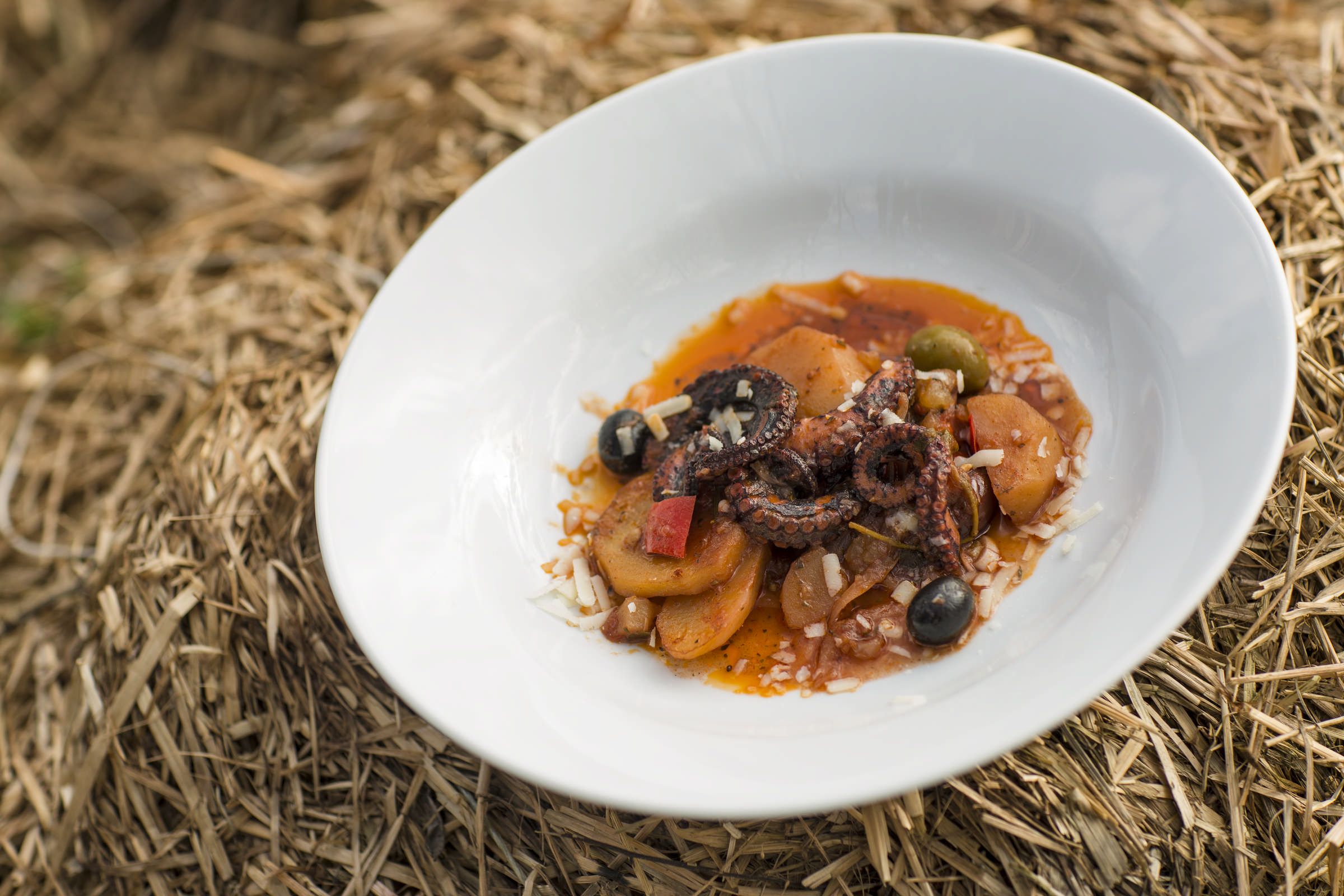
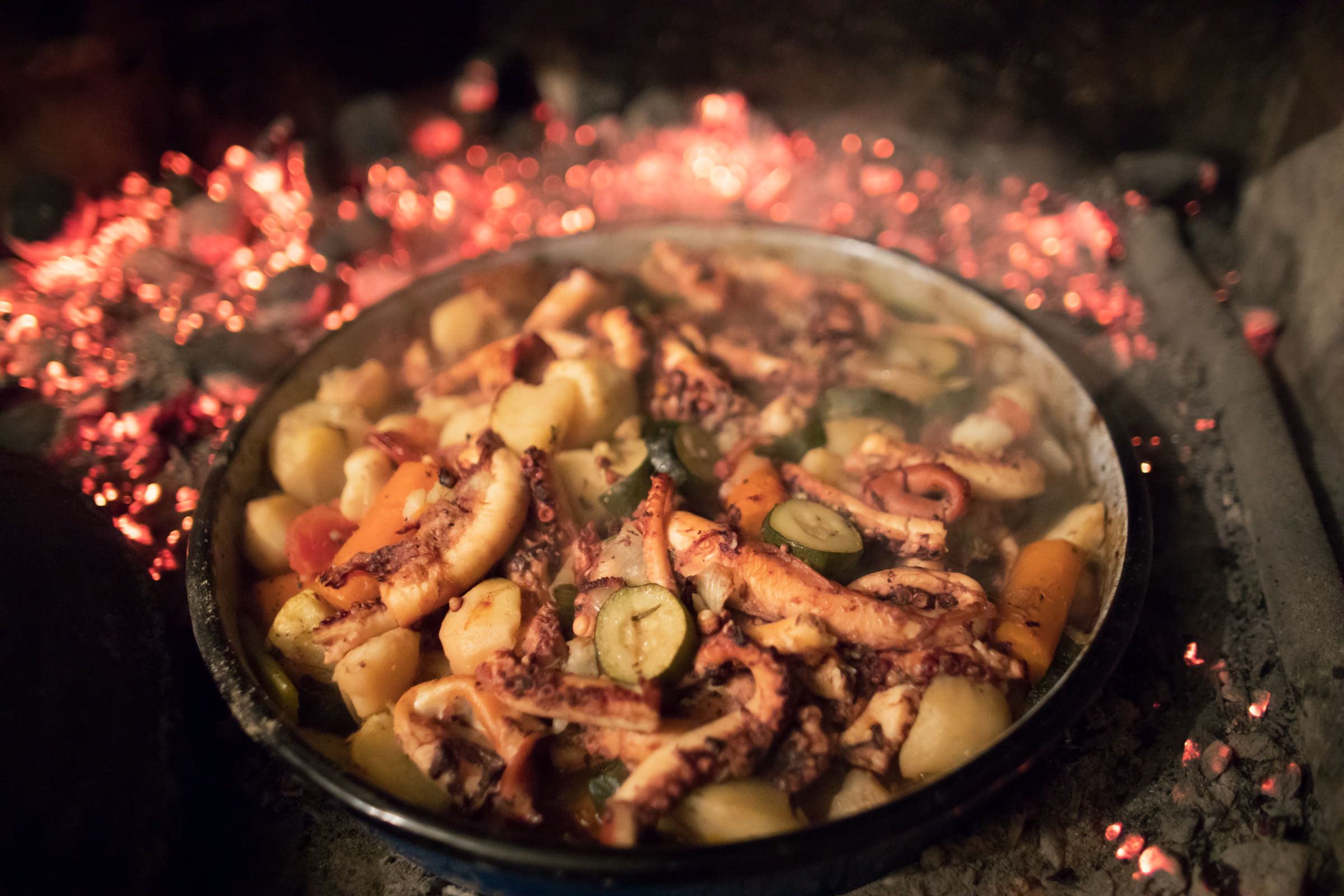
Octopus salad / Copyright Romulić and Stojčić
Although Croatia is already recognized for its gastronomic excellence, offering unforgettable gastronomic experiences for all food lovers, chefs, and experts who participated in the survey believed that our country deserves additional international recognition.
"Recognitions like this give us an additional incentive to continue the development of our gastronomic scene and to continue to promote ourselves as an attractive and quality gastronomic destination, which we really are," said Croatia National Tourist Board director Kristjan Staničić.
Recall, in 2020, the Croatian National Tourist Board presented Croatian gastronomy on this renowned portal, as well as Croatian chefs and regional gastronomic specialties.
Kvarner was presented by the youngest Croatian chef with a MICHELIN star, Deni Srdoč, who shared with readers a recipe for a lamb dish "Heritage lamb". Marko Gajski, the chef of LD Terrace in Korčula, who was also awarded a MICHELIN star this year, presented the Dalmatian region through his original recipe for Komiža bread, while chef Bruno Vokal from Noel, Zagreb's first MICHELIN star restaurant, shared his original recipe for "Deconstructed štruklji". Marina Gaši, chef and owner of the family restaurant Marina in Novigrad, presented the flavors of Istria via sardine tartare. The story of Croatian gastronomy was concluded by Tomica Đukić, chef of the Osijek Hotel and official chef of the Croatian national football team, who presented the rich flavors of Slavonia with a flavored fillet of a black Slavonian pig with pumpkin and beetroot.

Rich gastronomic offer from Slavonia / Copyright Romulić and Stojčić
International Cuisine In Zagreb: Pekinška Patka, international minimarket
September 20, 2020 - Continuing our series on Zagreb’s international food offer and the stories behind these cuisines and businesses. This time, international food market Pekinška Patka
My name is Josip and I'm Croatian by birth. We opened Pekinška Patka in 2013. There was a real lack of stores like this in Croatia. My partner Andrea and I were sick of working for other people. Andrea has been a vegetarian for a long time and she likes cooking. I like travelling and trying new foods, so we both had an interest in international foods. We're also both big music fans.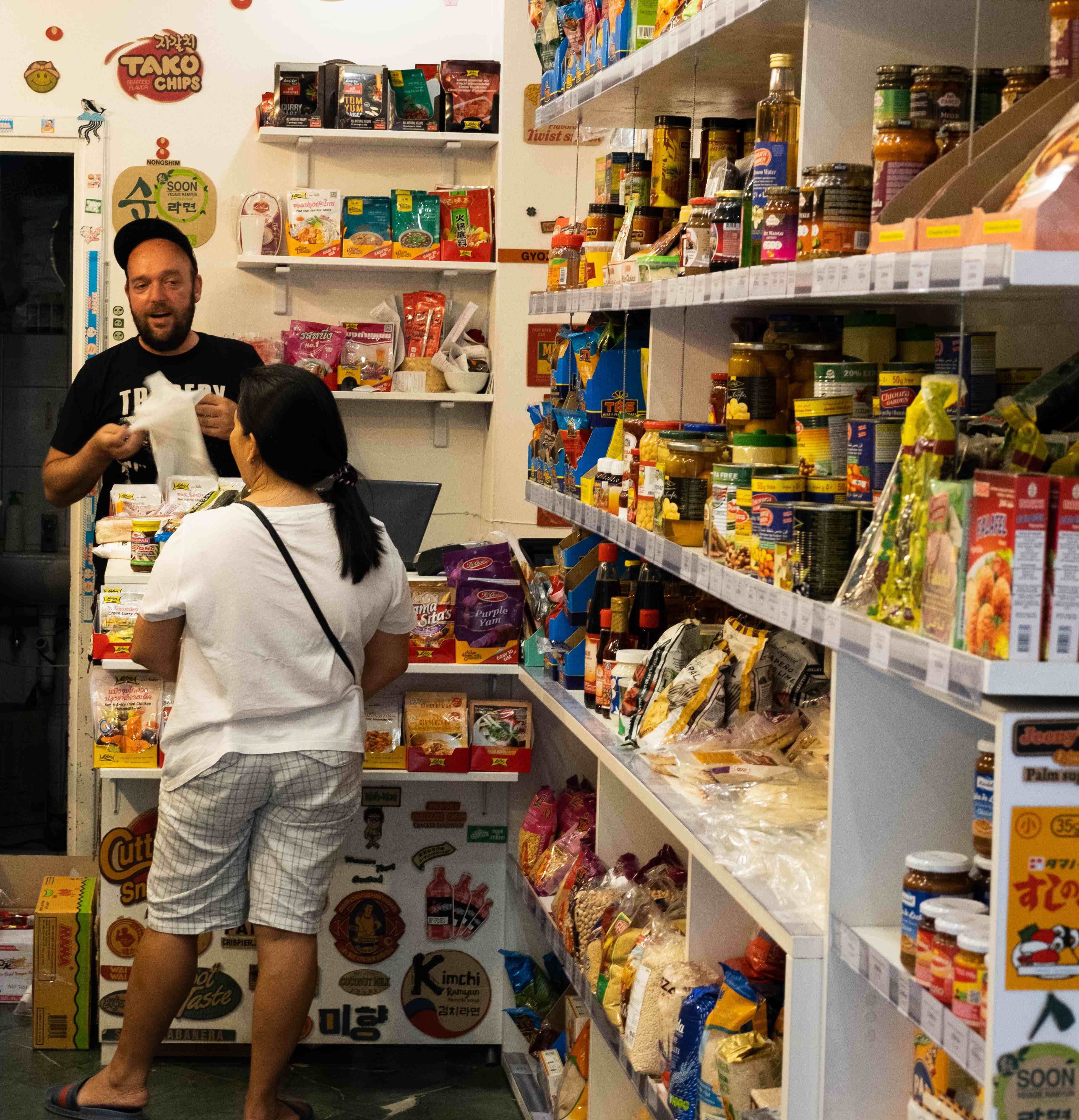
The first places I started travelling to were Greece and Turkey. I must have returned to those countries 10 times now. They really aren't so far from here and, when you go, there's something really similar about them, yet at the same time the cultures are very different (from here). Croatia is a mix of cultures, we have influences from there. In Istanbul, you can even find ćevapčići. The food is often very fresh, lots of vegetable dishes. They take great care over their food. For instance, if a guy does gyros in Greece, he takes great pride in what he does. The ingredients are always the best. It's a job probably he will do his whole life. People who do that job in other places, they don't have that sense. For them, it's just work.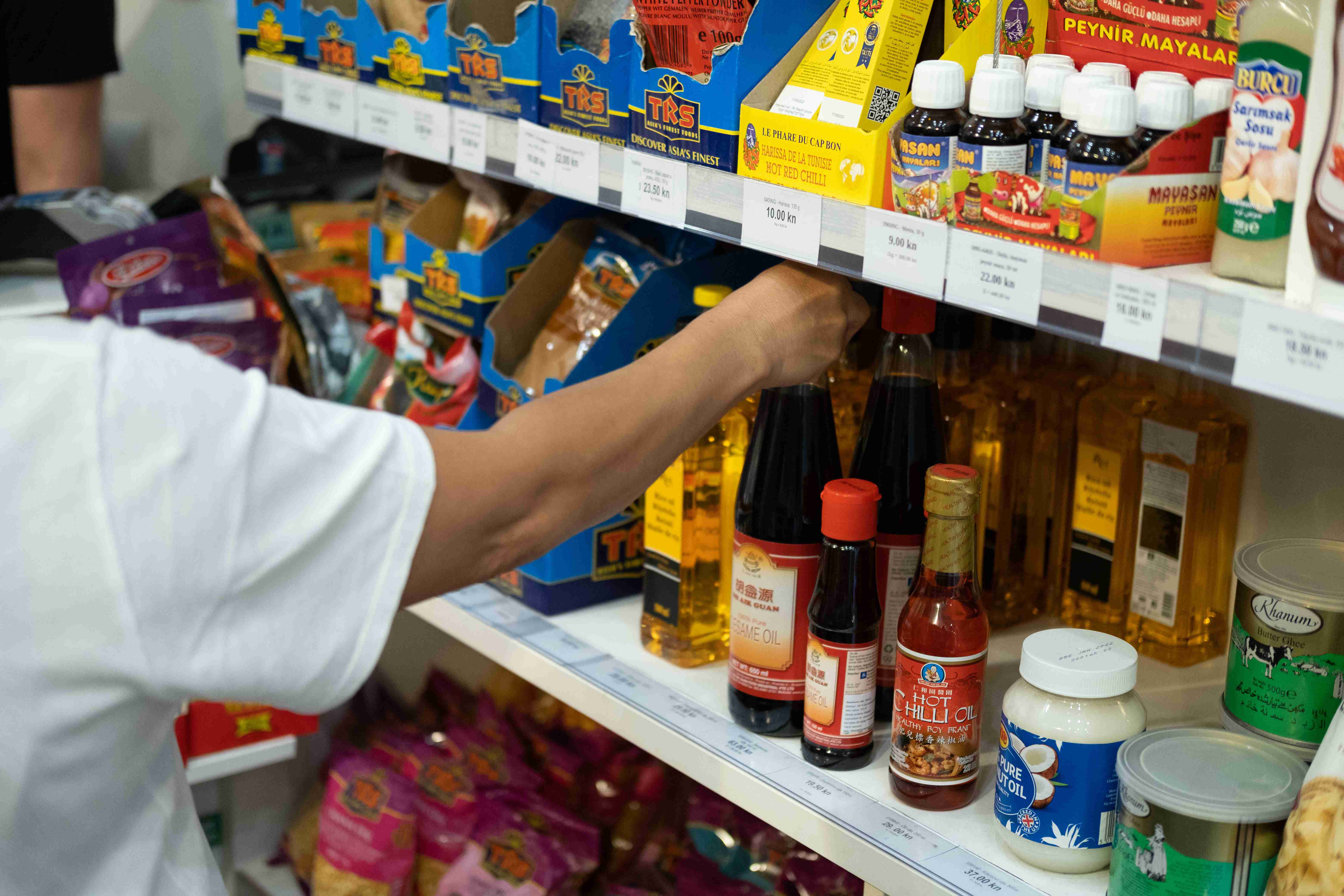
I visited Japan around 10 years ago for work. That was an excellent experience. I had plans for the first day I arrived, but they went out of the window. It was culture shock. I was there for around two weeks. I discovered ramen there. It was one of the easiest things for me to order. I ate sea urchins and onigiri. Everything was super tasty.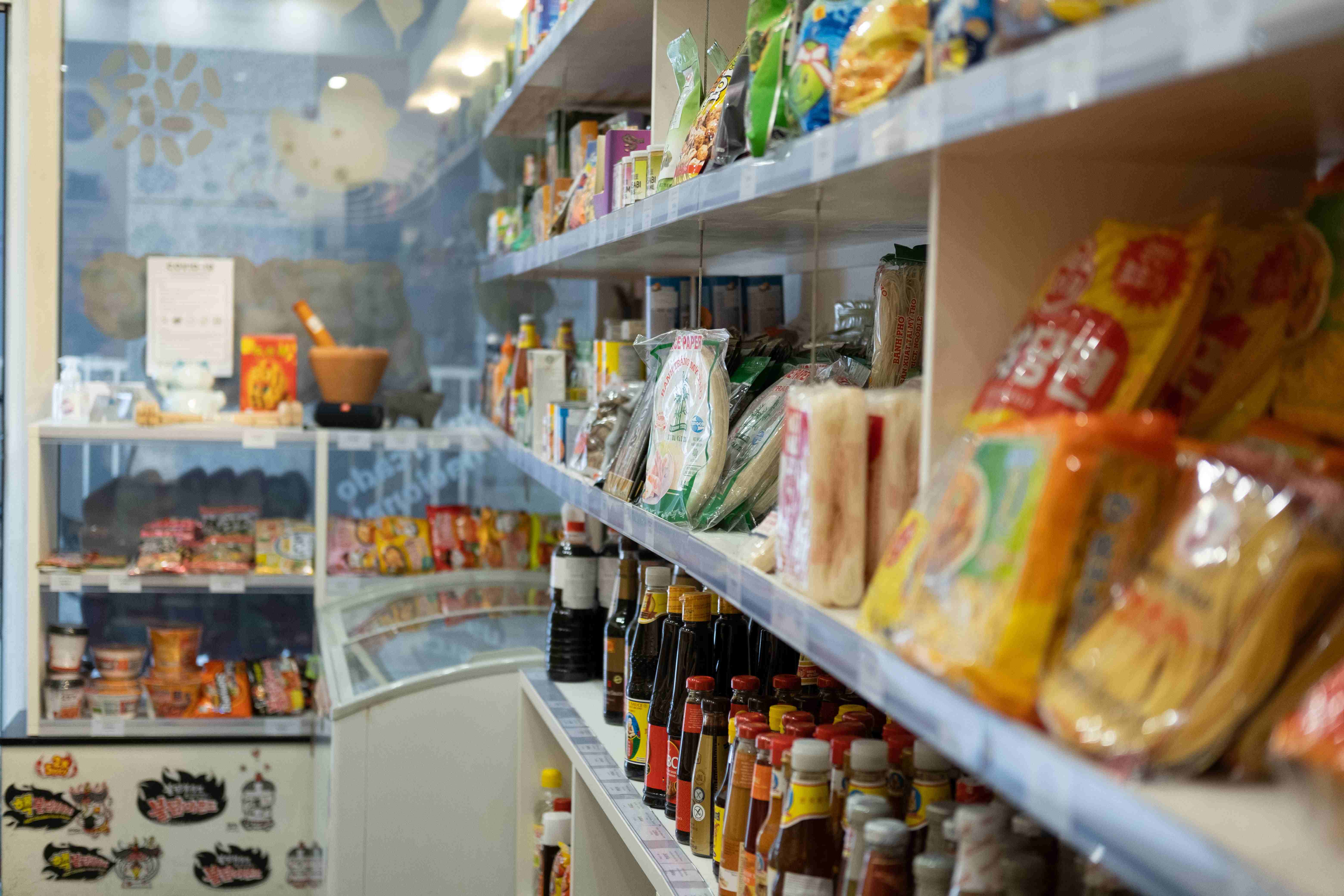
The stock in Pekinška Patka has been changing ever since we opened. We never used to have Mexican food. Now we have a whole shelf. And our Asian food range is now really big. We have foods and ingredients from India, the Middle East, Mexico, some from South America and also some West African basics like Egusi, Ogbono, Gari and Okra We try some things at home and if we want to promote them, we add them to the stock. Other new items come from customer requests.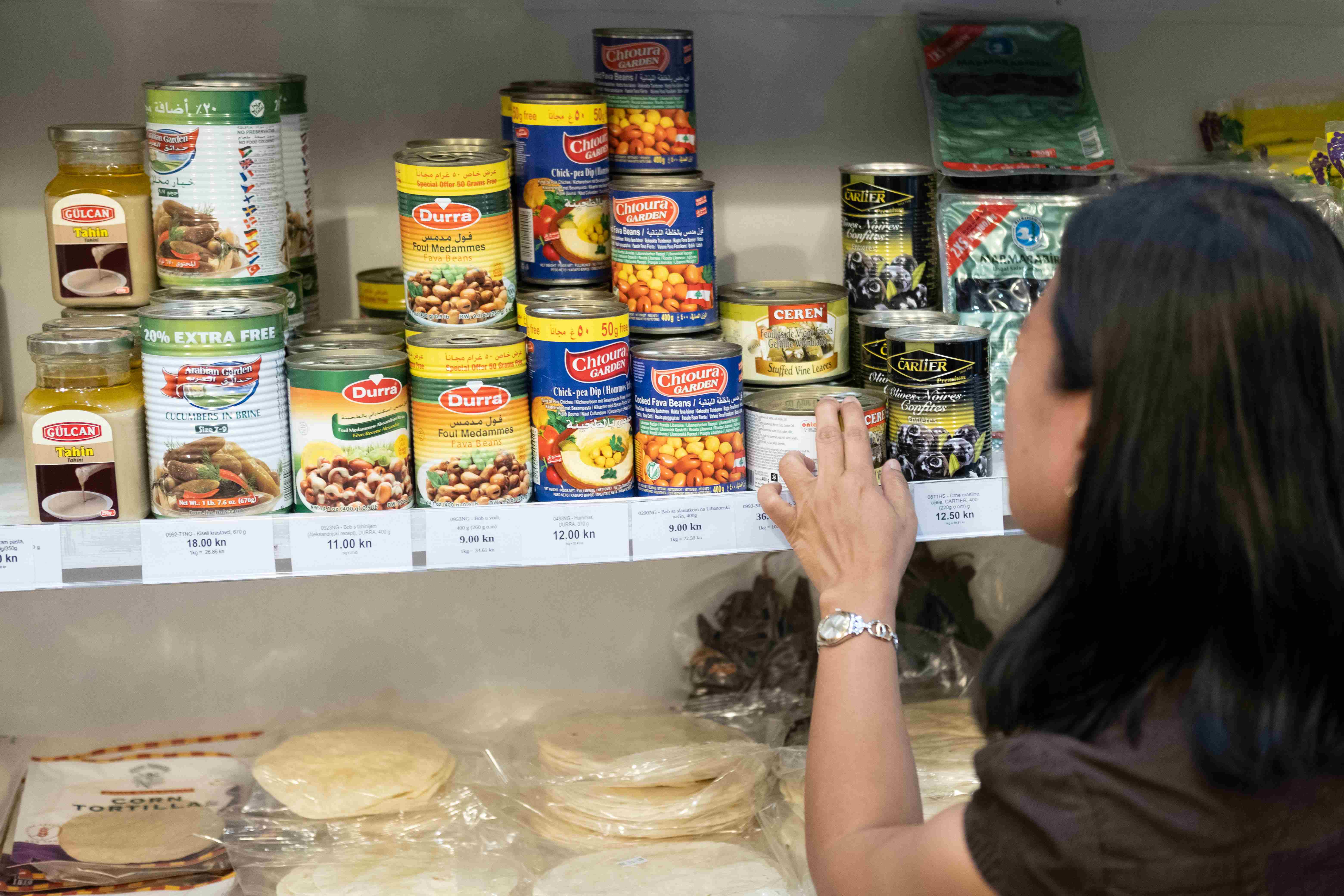
It's difficult to say what are the most popular things we sell. Everyone comes for different things. Filipino customers like to pick up ingredients for their tamarind soup - Sinigang. Some Croatians only come for noodles and Asian food, others only for Mexican or to buy spices. Most of our customers are Croatian, after that, lots of Filipino people come here, Israeli students, ex-pats and members of different Asian communities here in Zagreb. We like it most when families come in with their kids and you see that a child of maybe 10 years old is crazy about Asian food. When we were kids, it was impossible for our parents to bring us to a shop like Pekinška Patka. They didn't exist here back then.
Right on cue, TCN's chat with Josip was halted by two delightful Filipino ladies coming into the store. Regular customers of Pekinška Patka, they were only too happy to tell TCN what they like about the shop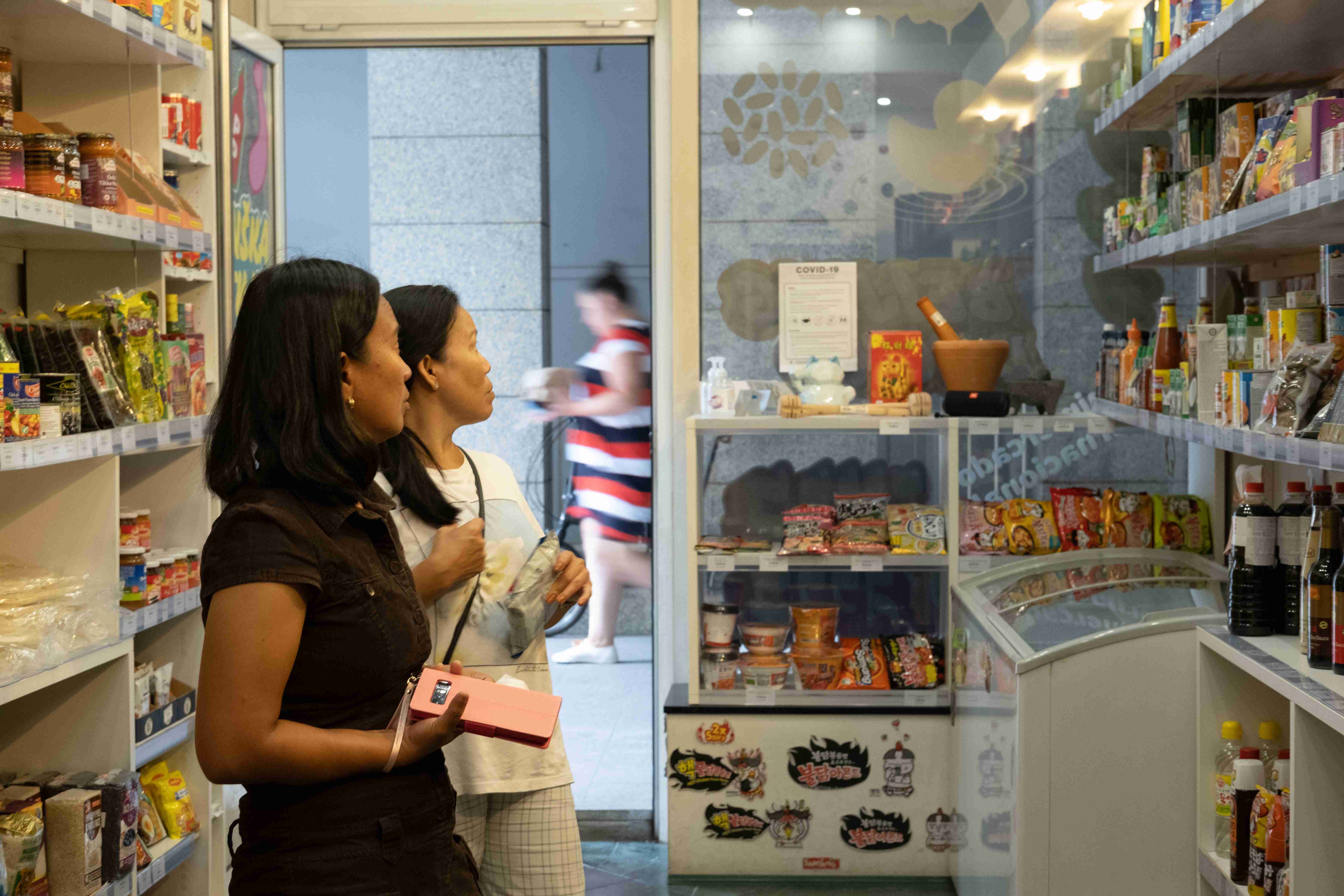
My name is Liezel and this is Marisol. We are from the Philippines. We discovered the shop on the internet maybe three months ago. We arrived in Croatia maybe one year ago. Life is much better since we discovered this store! We used to go to Metro, but it's far on the bus from where we live. They sell things here that we can't find in other supermarkets – good Oyster sauce, products we like from the Philippines, fish and snacks. The ingredients we buy here help us make some of our most famous national dishes, like pancit. You need special noodles to make it. Our Croatian friends are very curious about Filipino food. They love to try everything. And they like it, mostly.
Josip: Regular Croatian customers usually get more adventurous over time. They like trying new things. And they ask for recommendations, which I'm always happy to give. I've tried almost everything in the shop. In our house, we always have Lao Gan Ma chilli oils from China, Mexican salsa verde, Petjel peanut sauce from Indonesia, which is very aromatic and Japanese mayo, which I recommend to anyone who likes mayo. It's really special.
You can visit Pekinška Patka at Vlaška 78
All photos © Mateo Henec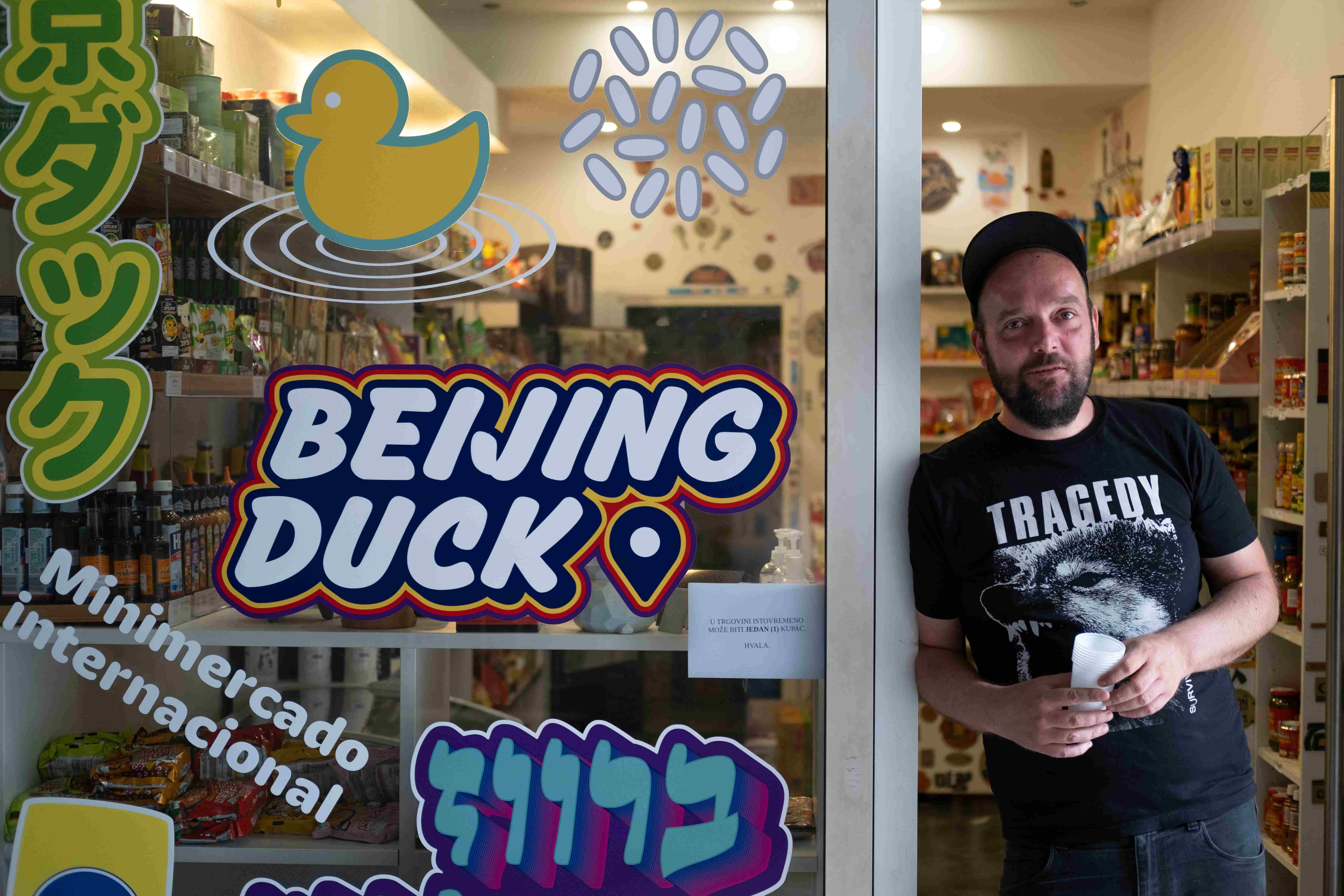
For the latest travel info, bookmark our main travel info article, which is updated daily.
Read the Croatian Travel Update in your language - now available in 24 languages
International Cuisine In Zagreb: Boršč, Pan-Slavic Food Specialists
September 15, 2020 - Continuing our series on Zagreb’s international food offer and the stories behind these cuisines and businesses. This time, Croatia's only pan-Slavic food specialists - Boršč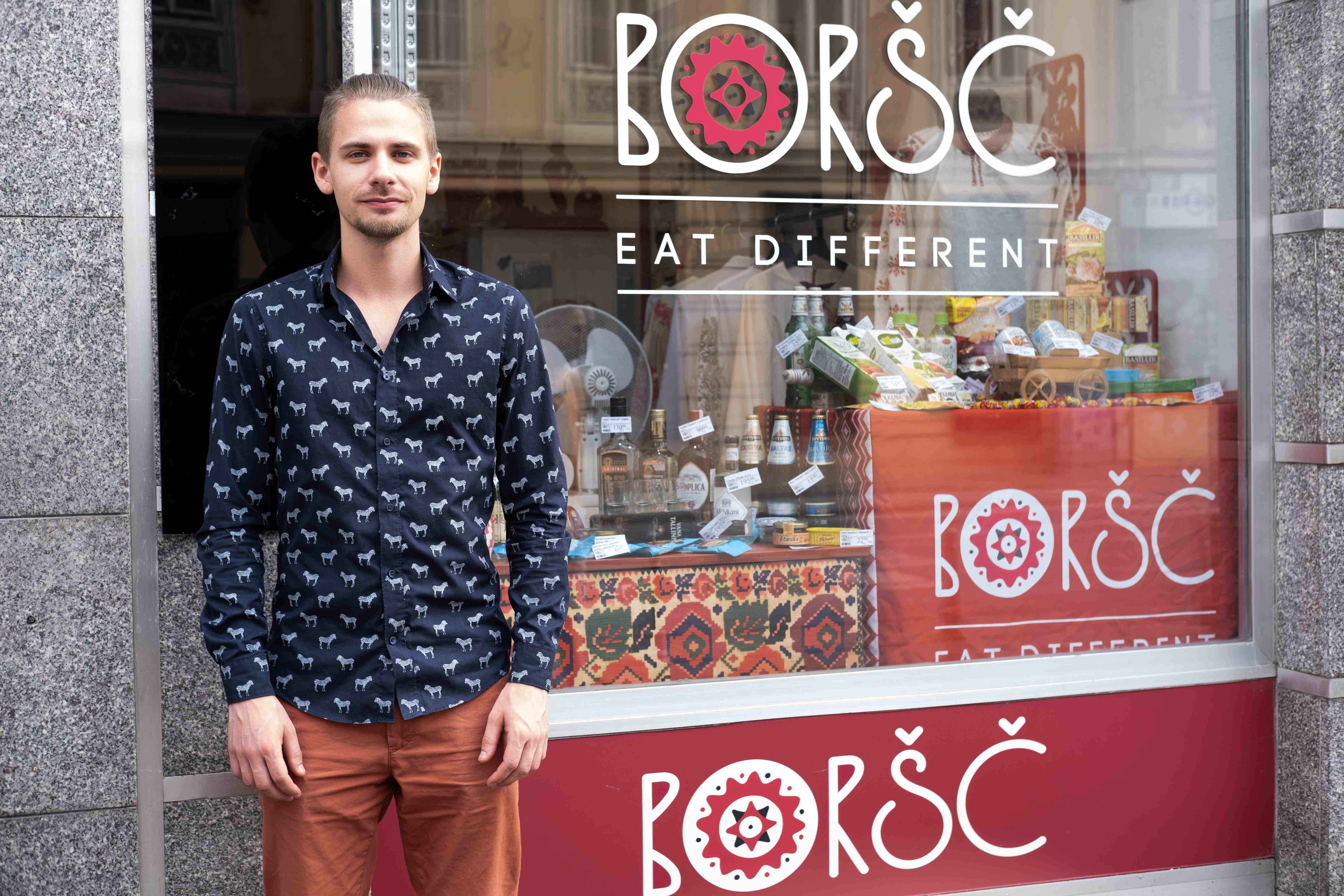
My name is Demian and I'm from Ukraine. My mother worked in Croatia, so I went to high school and to college here. She used to work in diplomacy. We moved around a lot. We went from Ukraine to Serbia, back to Ukraine, then to Croatia. Since coming here, aged around 15, I've been back to Ukraine only for visits – a month or two at maximum. Although I'm from western Ukraine, Lviv, a cultural town near the border with Poland, I also speak Russian and Croatian. And English. Apart from English, they're all Slavic languages, so you can find many words that have the same root. But, knowing both, I can say that the Russian and Croatian languages are really different from each other. Ukrainian is quite similar to Russian, although not as similar as some of the Balkan languages are to each other.
We opened Boršč four years ago. It started as a family business, me and my mum. We wanted to stock all the things we missed. Food and drinks from Ukraine, Poland, Russia, Estonia and Lithuania.
Ukrainian food is really not so sophisticated. Some dishes can take many hours to prepare and cook, but ingredients-wise, it's really not complicated. For instance, we have varenyky – the nearest thing you'd know them as is pierogi from Poland. They are traditional dumplings. You can fill them with anything you want. Cabbage. Potatoes, mushrooms. Potatoes and mushrooms. There are sweet versions with cherries or berries like strawberry. The savoury ones we usually fry in a pig fat which has some meat on it. It's a bit like Croatian čvarci, but softer and with more meat attached.
We have boršč. The recipe is a bit different to the Russian ones. Several countries lay claim to the soup. But, many do say that it is originally Ukrainian. Its name comes from a green plant which grows there, in wet areas, borschevik. The original boršč was green, not purple from beets. We still make the green one now, sometimes with different ingredients, and more often in summer. Sometimes it's completely vegetarian, other times it has meat and some people cook it using only vegetables and beef or pork bones.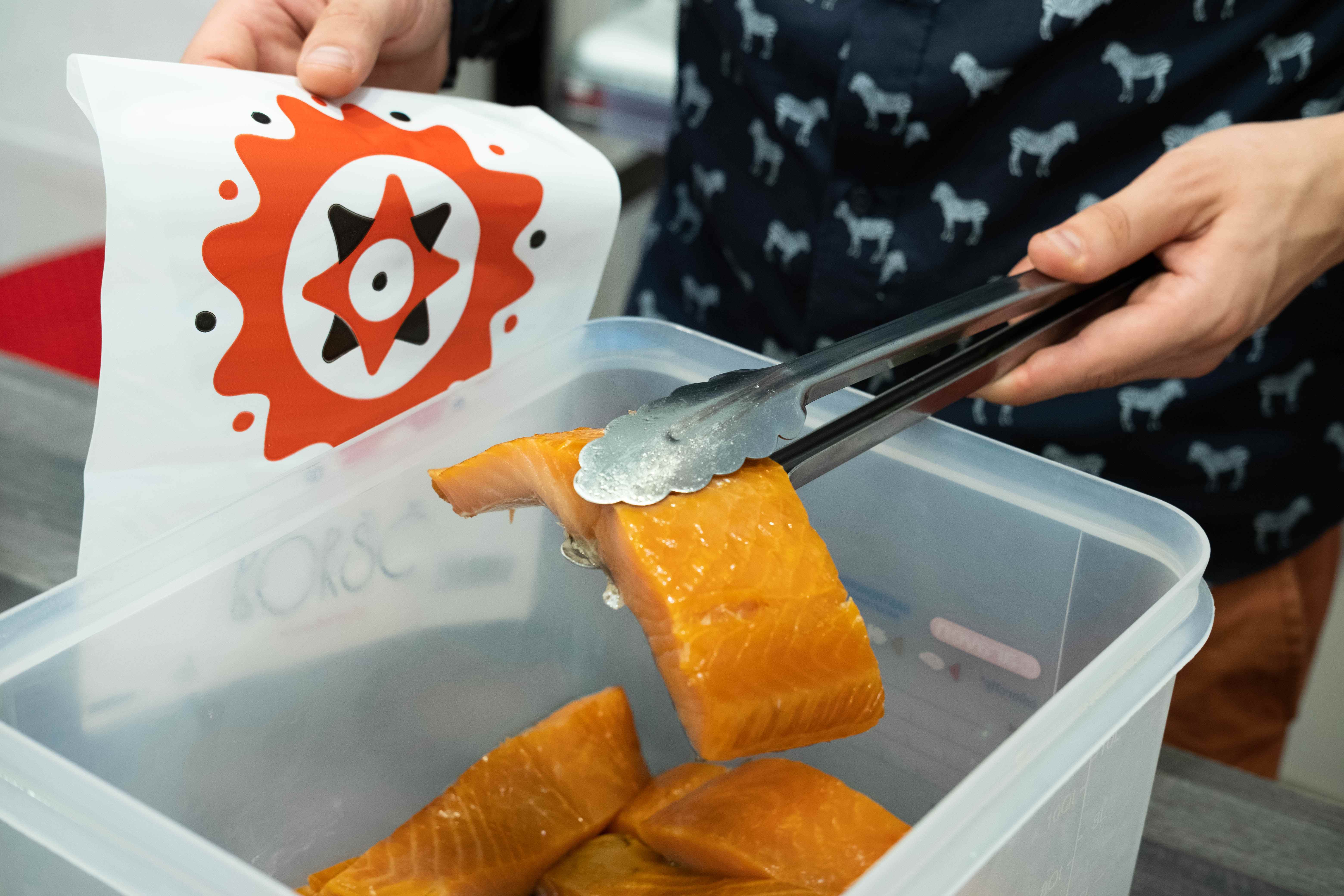
I've never come across a country more reliant on pig meat than Ukraine. If you think that Croatians eat a lot of pig, you should go to Ukraine! You have much more beef, veal and lamb in the Croatian diet. Those dishes you don't have regularly in the Ukrainian diet. We do eat chicken and, yes, there are some beef dishes. The fish we eat is completely different to that eaten in Croatian – ours comes from the Black sea, the Baltic or the North sea. The most popular is salmon. To be honest, I don't know the English names of the other fish, ha! I'm sure people in the UK have the same ones on their menu.
The climate in Ukraine can be tough. It's much colder there. Potatoes and cabbage grow well. In Croatia, you have beautiful tomatoes and green salad. You would not see that in Ukraine. But, our potatoes are the best. The land is very fertile, particularly in central Ukraine. It's good for growing.
In Boršč we sell several kinds of fish which are popular in Ukraine and Baltic countries – salmon, herring and trout. Our smoked salmon comes from the north sea. Almost everything in the shop comes from Europe, much of it from Norway, like the salmon, the red caviar, other fish. This salmon is actually smoked in the Netherlands. In Croatia, salmon is usually sliced thinly in the stores. They don't have the tradition like in northern countries to sell it in these styles of pieces. It's a really popular item in the store. We have caviar from the North sea, some from the Caspian sea. And we have salt cod – bakalar in Croatian - and cod liver, which is incredibly popular in Ukraine. It's considered a delicacy and is something of a national dish, often served on toast. Chocolates from Russia, Ukraine and Poland were one of the biggest revelations TCN tried at Boršč - they were incredible! They have a higher content of (expensive) cocoa and less (cheap) sugar than most of the chocolates made in Croatia
Chocolates from Russia, Ukraine and Poland were one of the biggest revelations TCN tried at Boršč - they were incredible! They have a higher content of (expensive) cocoa and less (cheap) sugar than most of the chocolates made in Croatia
Sweets are really good in Ukraine and Russia. They're very different to sweets in western Europe. And different to those in Croatia too. Something like Lindt is much more sweet and buttery. Ukrainian and Russian sweets have a higher percentage of cocoa. Some of our Croatian customers are chocolate connoisseurs and these are very popular with them. Another popular purchase made by Croatians is halva – it's usual to only find the Turkish ones here. They are quite tough, made from sesame. Ours are softer, made from sunflower.
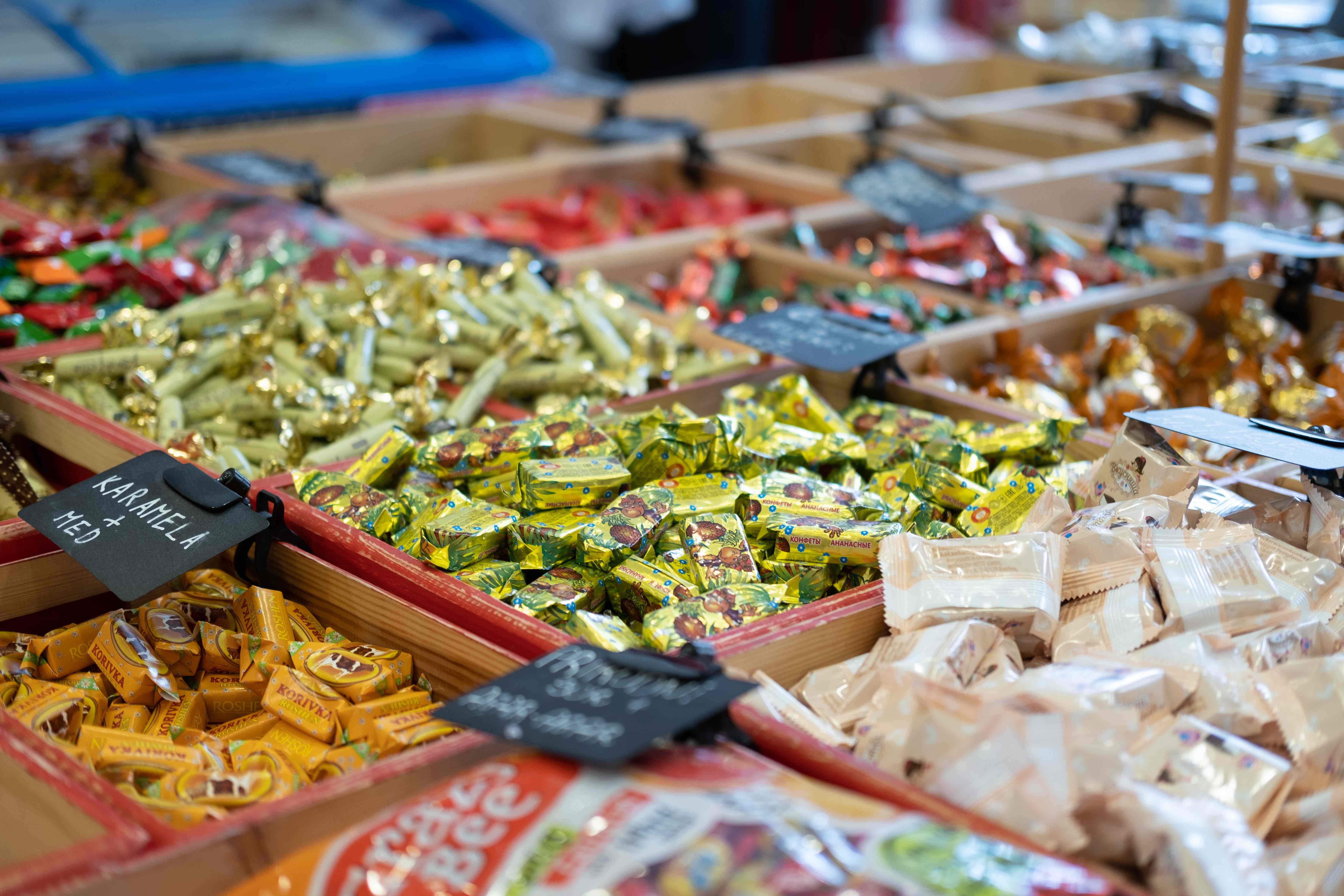 The colourful display of pan-Slavic specialist chocolates dominates the centre of the shop - you so want to try them all!
The colourful display of pan-Slavic specialist chocolates dominates the centre of the shop - you so want to try them all!
We have dark beers and light beers. They're from Lithuania, Russia and Poland. We have wines from Moldova and Georgia. We have sparkling wines from Russia and Ukraine. The Georgian wine is the best we have. Georgia claims to be the oldest winemaking country in the world. Winemaking is proven to be at least 8000 years old there. They have the oldest indigenous grape in the world. Georgians bury their wine underground in Kvevri - huge clay jars, which add an extra flavour. After the wine is fermented like this, it doesn't require the addition of preservatives when being bottled.
We have many preserved vegetables, like yellow tomatoes, seasonings and different types of sunflower seed, condiments that might be comparable to ajvar. This one is from Georgia and is a spicy mix of vegetables, using garlic, paprika and horseradish. One of our best-selling items is actually condensed milk. It's used not only in the Slavic kitchen but in the cuisine of Asia and South America.
This is kvass. It's a fermented drink, but it's non-alcoholic. It's popular in all north European countries, the whole Baltic region and especially popular in Russia. The taste is very specific. It's somewhere between Coca cola and beer. The ones we sell come from Russia and Ukraine. We also have a couple of types of birch juice. It's a traditional non-alcoholic drink made from the sap of the birch tree. It's maybe a little comparable to Croatia bazga, but much, much less sweet. It's very healthy. The sugars in it are natural ones. It has an incredibly refreshing taste and maybe a very soft lemon aroma (TCN tried this – it was amazing!)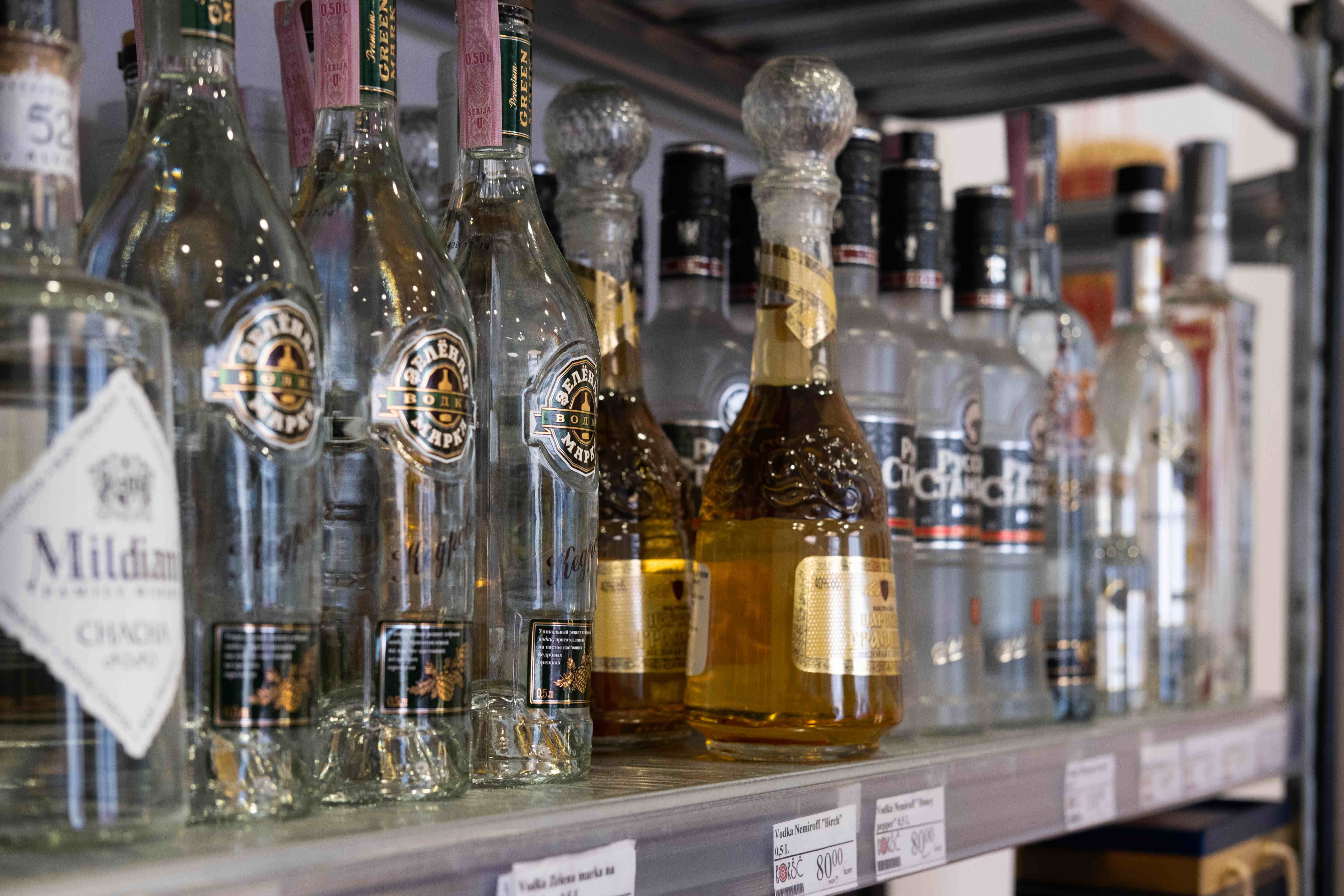
Some of the most prestigious items we sell are the varieties of hard alcohol. We have Armenian brandies. This one, Ararat, is considered to be the best one in the world. We have several vodkas, including Beluga, which is a premium vodka from Russia. We have a Ukrainian vodka and we have a honey and pepper flavoured one too. You can easily tell the quality of a vodka from the aroma and the aftertastes.
Most of our customers are actually Croatian - around 60%. Russians and Ukrainians are the next highest percentage. We have some Polish and Lithuanian people come in, but it's usually young people who are here to study with Erasmus.
I've been living in Croatia for about 11 years now. I enjoy life here. Everything is simple, easy, relaxed. It's considered one of the safest countries to live. And you can really feel that. It feels safer than the other two countries where I've lived. I'm maybe too young to yet know if I will stay here forever, but I can definitely say that I enjoy Croatia.
You can visit Boršč at Vlaška 58 (ulaz s trga Drage Iblera)
To follow our whole series on international cuisine and to follow the Croatian restaurant and gastro scene, keep an eye on our Gourmet pages
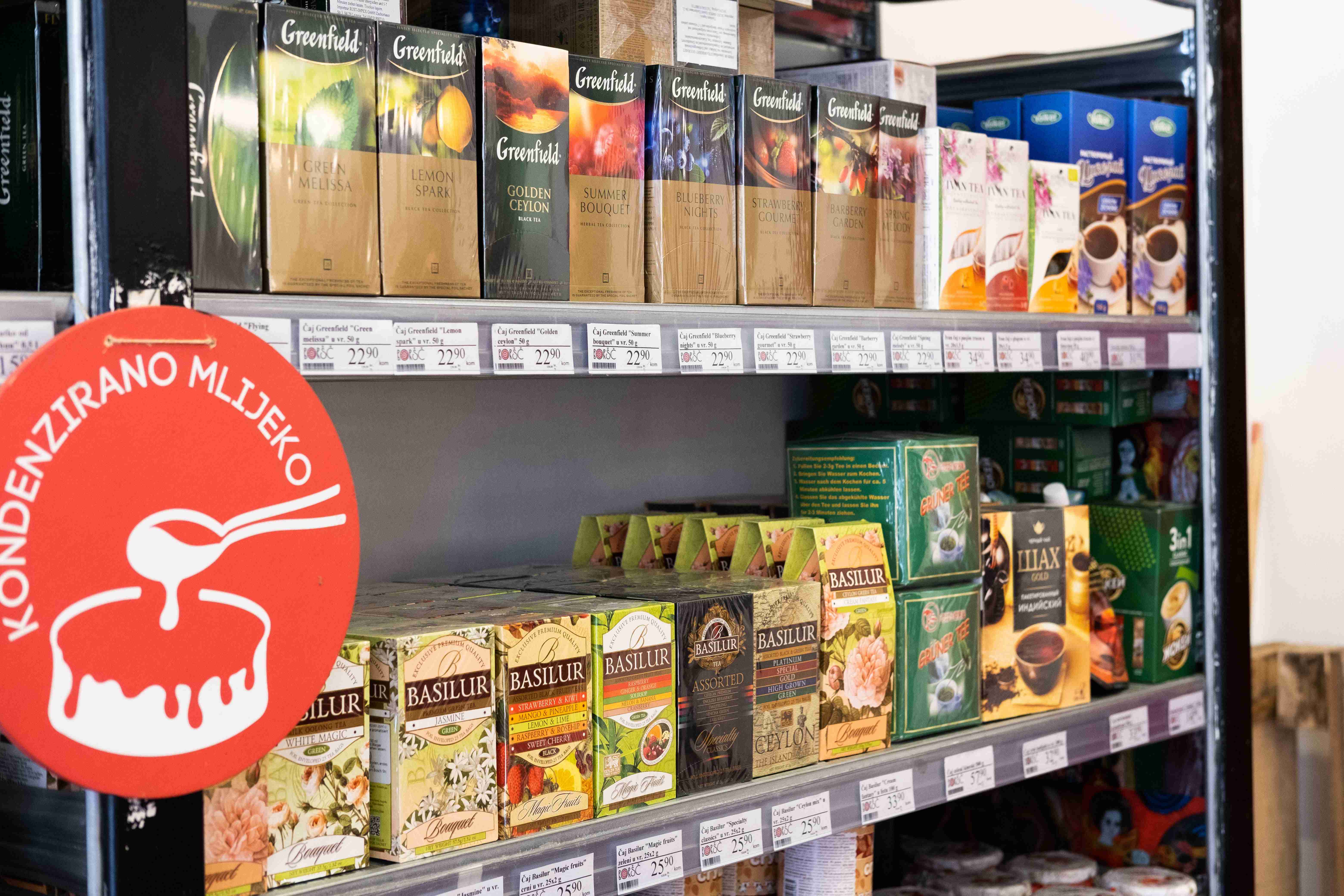
All photographs © Mateo Henec
For the latest travel info, bookmark our main travel info article, which is updated daily.
Read the Croatian Travel Update in your language - now available in 24 languages

